Question and Answer forum for K12 Students


Juvenile Delinquency Essay | Essay on Juvenile Delinquency for Students and Children in English
Juvenile Delinquency Essay: “In our country, children are considered a gift from heaven and if the child is a boy then nothing could be more soothing for the family as from the very beginning children are exempted from severe punishment for any wrong commitment on their part irrespective of the gravity of the act.” This one statement itself says and justifies for the social evil, our society is facing today: Juvenile Delinquency.
You can read more Essay Writing about articles, events, people, sports, technology many more.
Long and Short Essays On Juvenile Delinquency for Kids and Students in English
Given below are two essays in English for students and children about the topic of ‘Juvenile Delinquency’ in both long and short form. The first essay is a long essay on the Juvenile Delinquency of 400-500 words. This long essay about Juvenile Delinquency is suitable for students of class 7, 8, 9 and 10, and also for competitive exam aspirants. The second essay is a short essay on Juvenile Delinquency of 150-200 words. These are suitable for students and children in class 6 and below.
Long Essay on Juvenile Delinquency 500 Words in English
Below we have given a long essay on Juvenile Delinquency of 500 words is helpful for classes 7, 8, 9 and 10 and Competitive Exam Aspirants. This long essay on the topic is suitable for students of class 7 to class 10, and also for competitive exam aspirants.
In ordinary terms, a child roughly between the age of 7 to 16/18 years who is involved in some kind of a ‘status offence’ such as vagrancy, immortality, truancy and ungovern ability is a juvenile delinquent. Thus, juvenile delinquency is not just about under-aged criminals, who get involved in criminal activities. In fact, the term ‘juvenile delinquency’ refers to the violation of a code of conduct or a regular occurrence of certain patterns of disapproved behaviour of children and adolescents. The well accepted age at present for juvenile delinquents is 16 years for boys and 18 years for girls.
Juvenile delinquents are mainly classified on the basis of their behavioural patterns. They range from the escapers, who keep away from school and get involved in petty thefts and armed robberies, destruction of property, violence and sexual offences. They are also classified according to the type of violation they commit.
Thus, psychologists have grouped juvenile delinquents on the basis of their personality traits as mentally defective, psychotic, neurotic, situational and cultural delinquents. According to the National Crime Records Bureau (NCRB) report, the trend of children committing crime has an alarming echo across the country.
It is extremely hard to trace and keep a check on juvenile delinquency as of all the delinquencies committed by juveniles, only a small percentage come to the notice of the police and the courts. Traditionally, surveys suggest that delinquencies like theft, burglary, robbery, dacoity and other such offences are most commonly committed by juveniles. But recent statistics reveal that juveniles have also been found actively involved in riots, murder, rape, kidnapping and abduction as well.
Reason being that courts and juvenile rights advocates believe that second chance should be given to youth who commit crimes, so criminals are walking in the streets, living as our neighbours and in many cases committing additional crimes.
The delinquency rates are comparatively much higher among boys than in girls. Children from broken homes or disturbed families who are either homeless or living with guardians are more likely to indulge in criminal activities. Low education or illiteracy and poor economic background are major features of juvenile delinquents. But now-a-days, it’s not only street children who take to crime, even children from well-off middle and upper middle class families are turning to crime due to peer pressure and crime thrill the hunger of adolescents to be heroes among their friends, the need to portray class and style, effect of cinema have propelled the rate of juvenile delinquency in the society.
The media plays a major role in creating bogus desires and images in the minds of the youth, for which they are willing to do anything. Moreover, unmonitored access to the internet is another reason for growth in these crimes, as many are caught swindling money from bank accounts. Children belonging to the elite class, who are either sons or daughters of politicians, businessmen are also found involved in criminal acts. This largely attributes to criminals going scot-free in high-profile criminal cases, so the fear barrier no longer exists.
Increased exposure combined with isolation is the root cause of these behavioural issues. Children are growing up much faster, but their conscience and ability to distinguish between right and wrong isn’t developing at the same rate and they don’t feel the need to think things through. In most cases, the cause behind juvenile delinquency is defective upbringing or no upbringing, faulty or no family interaction. Children are not born criminals.
It’s the situations and circumstances that lead them into delinquencies. Mostly all juvenile offences have deeper roots and serious situational factors which are responsible for a child behaving in a particular way. Family plays a vital role in structuring the mental, emotional and behavioural patterns of a child. Other factors that are responsible for the rise in juvenile delinquency are unhealthy neighbourhood, cinema, pornographic literature and bad company.
In UK, child between 10 to 18 years become criminally responsible for his action and be tried by the youth court or could be tried in an adult court as per the gravity of the offence committed. In our country too, the time has come to bring some reforms in the Juvenile laws. There is a steep rise in serious crimes involving youth of 16 to 18 years of age as they very well know that below 18 years is the ‘getaway pass’ for them from criminal prosecution. The punishment should be made a big deterrent in order to inject the feeling of fear in the mind of the criminals.
Short Essay on Juvenile Delinquency 200 Words in English
Below we have given a short essay on Juvenile Delinquency is for Classes 1, 2, 3, 4, 5, and 6. This short essay on the topic is suitable for students of class 6 and below.
In the recent 2012 Delhi gang rape case, media too highlighted that ‘Most Brutal’ of all the accused person was the juvenile. For the brutalising act, he has been sentenced to imprisonment for the period of 3 years where others have got the death sentence. The principle that should have been followed for trying juvenile offenders is that Juvenility should be decided as per the state of mind and not just the state of body.
Juvenile Justice Act, 1986 was enacted by our Parliament in order to provide care, protection, treatment, development and rehabilitation of neglected or delinquent as a uniform system of juvenile justice mechanism throughout our country. These days we have observation homes, reformatory schools, custody institutions, probation homes etc., to help juvenile delinquents reform themselves so that they can be gradually absorbed into the mainstream society.
Moreover, we need to pay greater attention to improving the average condition in a society so that no child confronts such situations that force them to adopt unacceptable behavioural patterns. We need to find ways and means to pool the youthful energy of the children in a constructive and desired direction.

11 Lines to Remember Essay on Juvenile Delinquency
- Exempted – to free from an obligation or liability to which others are subject
- Vagrancy – a person without a settled home or regular work who wanders from place to place and lives by begging
- Truancy – the action of staying away from school without good reason; absenteeism
- Psychotic – mentally unstable; intensely upset, anxious, or angry
- Neurotic – abnormally sensitive, obsessive, or anxious; disturbed; irrational
- Echo – a sound heard again and again, any repetition of the ideas or opinions
- Burglary -theft, robbery, illegal entry of a building with intent to commit a crime
- Propelled – drive or push something forward, to urge onward
- Bogus – false, fake, not genuine
- Swindling – to obtain money by fraud, to cheat for money
- Deterrent – a thing that discourages or is intended to discourage someone from doing something

Presentations made painless
- Get Premium
111 Juvenile Delinquency Essay Topic Ideas & Examples
Inside This Article
Juvenile delinquency is a pressing issue that affects communities and families worldwide. It refers to the act of committing crimes by young individuals below the age of 18. Understanding the causes, consequences, and solutions to juvenile delinquency is crucial in addressing this problem effectively.
If you are tasked with writing an essay on juvenile delinquency, choosing a compelling topic is essential. To help you get started, here are 111 juvenile delinquency essay topic ideas and examples:
- The impact of family structure on juvenile delinquency
- The role of peer pressure in juvenile delinquency
- Juvenile delinquency and mental health disorders
- The relationship between poverty and juvenile delinquency
- Juvenile delinquency and substance abuse
- The influence of media on juvenile delinquency
- The effectiveness of rehabilitation programs for juvenile delinquents
- Juvenile delinquency and school dropout rates
- The link between child abuse and juvenile delinquency
- The role of genetics in juvenile delinquency
- Juvenile delinquency and social media
- The impact of neighborhood characteristics on juvenile delinquency
- Juvenile delinquency and gang involvement
- The relationship between juvenile delinquency and race/ethnicity
- Juvenile delinquency and the juvenile justice system
- The role of trauma in juvenile delinquency
- Juvenile delinquency and recidivism rates
- The influence of parental monitoring on juvenile delinquency
- Juvenile delinquency and educational attainment
- The impact of peer relationships on juvenile delinquency
- Juvenile delinquency and juvenile detention centers
- The relationship between juvenile delinquency and technology
- Juvenile delinquency and juvenile curfew laws
- The effectiveness of early intervention programs for at-risk youth
- Juvenile delinquency and juvenile probation programs
- The influence of social norms on juvenile delinquency
- Juvenile delinquency and juvenile diversion programs
- The role of gender in juvenile delinquency
- Juvenile delinquency and juvenile court proceedings
- The impact of trauma-informed care on juvenile delinquency
- Juvenile delinquency and substance abuse treatment programs
- The relationship between juvenile delinquency and child welfare services
- Juvenile delinquency and community-based programs
- The influence of school climate on juvenile delinquency
- Juvenile delinquency and restorative justice practices
- The role of law enforcement in addressing juvenile delinquency
- Juvenile delinquency and school resource officers
- The impact of social inequality on juvenile delinquency
- Juvenile delinquency and mental health treatment
- The relationship between juvenile delinquency and trauma exposure
- Juvenile delinquency and gun violence
- The influence of family dynamics on juvenile delinquency
- Juvenile delinquency and cyberbullying
- The role of community policing in preventing juvenile delinquency
- Juvenile delinquency and school safety measures
- The impact of parental involvement on juvenile delinquency
- Juvenile delinquency and substance abuse prevention programs
- The relationship between juvenile delinquency and foster care
- Juvenile delinquency and the juvenile justice reform movement
- The influence of social support networks on juvenile delinquency
- Juvenile delinquency and the school-to-prison pipeline
- The role of mental health stigma in juvenile delinquency
- Juvenile delinquency and trauma-informed education
- The impact of school discipline policies on juvenile delinquency
- Juvenile delinquency and community engagement strategies
- The relationship between juvenile delinquency and child advocacy programs
- Juvenile delinquency and the juvenile justice system disparities
- The influence of trauma-focused cognitive behavioral therapy on juvenile delinquency
- Juvenile delinquency and the impact of adverse childhood experiences
- The role of school counselors in addressing juvenile delinquency
- Juvenile delinquency and the role of probation officers
- The impact of mentoring programs on juvenile delinquency
- Juvenile delinquency and the role of school resource officers
- The relationship between juvenile delinquency and parental incarceration
- Juvenile delinquency and the impact of school suspensions
- The influence of community-based mental health services on juvenile delinquency
- Juvenile delinquency and the role of school-based mental health screenings
- The impact of trauma-focused interventions on juvenile delinquency
- Juvenile delinquency and the relationship between poverty and crime
- The role of parental involvement in preventing juvenile delinquency
- Juvenile delinquency and the impact of school climate on student behavior
- The relationship between juvenile delinquency and mental health disorders
- Juvenile delinquency and the role of community-based mental health services
- The influence of trauma-informed care on juvenile delinquency
- The impact of parental involvement in preventing juvenile delinquency
Choose a topic that interests you and conduct thorough research to support your arguments and findings. By shedding light on the complexities of juvenile delinquency, you can contribute to the ongoing dialogue on how to prevent and address this critical issue in our society.
Want to create a presentation now?
Instantly Create A Deck
Let PitchGrade do this for me
Hassle Free
We will create your text and designs for you. Sit back and relax while we do the work.
Explore More Content
- Privacy Policy
- Terms of Service
© 2023 Pitchgrade
Welcome Guest!
- IELTS Listening
- IELTS Reading
- IELTS Writing
- IELTS Writing Task 1
- IELTS Writing Task 2
- IELTS Speaking
- IELTS Speaking Part 1
- IELTS Speaking Part 2
- IELTS Speaking Part 3
- IELTS Practice Tests
- IELTS Listening Practice Tests
- IELTS Reading Practice Tests
- IELTS Writing Practice Tests
- IELTS Speaking Practice Tests
- All Courses
- IELTS Online Classes
- OET Online Classes
- PTE Online Classes
- CELPIP Online Classes
- Free Live Classes
- Australia PR
- Germany Job Seeker Visa
- Austria Job Seeker Visa
- Sweden Job Seeker Visa
- Study Abroad
- Student Testimonials
- Our Trainers
- IELTS Webinar
- Immigration Webinar
IELTS Writing Task 2 Cause/Solution Essay Topic: Juvenile Delinquency
Updated On Jan 19, 2024

Share on Whatsapp
Share on Email
Share on Linkedin

IELTS Writing Prediction Questions for 2024
One of the various types of essays that can be asked in the IELTS W riting task 2 is a problem solution essay. IELTS problem solution essay requires candidates to talk about a specific problem or its causes and suggest possible solutions to the same. The problem-solution essay topics like Juvenile Delinquency are based on real-life situations and issues and are essential to be familiar with the pattern of the essay topics in order to perform well in Writing Task 2.
Given below is an example of a problem & solution essay. Let’s understand how to frame the essay from the ideas we have.
In some countries, a high proportion of criminal acts are committed by teenagers. Why has this happened? What can be done to deal with this?
Get Evaluated for FREE:
Do you have an essay on this topic? Please post it in the comments section. One of our IELTS trainers will evaluate your essay from an examiner’s point of view and reply to the comment. This service is completely FREE of cost.
Cause solution Essay
Introduction
- Give insight about the topic and elaborate briefly.
- Give prelude to what can be expected in the essay
- Paragraph 1: Cause (Without supervision from parents or caregivers, children’s extreme behaviours such as aggression, hostility or defiance are given free rein to develop in their later lives. In addition, there is a direct correlation between the lack of engagement in educational activities and serious criminal offending in children.)
- Paragraph 2: Solution (The better cure for young criminals is rehabilitation. Throughout education and training, the youth can realise their wrongful actions and be given opportunities to turn over a new leaf and transform themselves into useful members of society later in life.)
Reparaphrase the question and end up with the solution stated.
Sample Essay
Today, youth crime is rife. Theft, burglary or even murder are now committed by people of younger and younger ages. The aim of this essay is to investigate the factors responsible for the increase in juvenile delinquency and put forward a number of ways to appropriately punish young offenders.
It is observed that extreme behaviours are exhibited by most children from dysfunctional families. Without supervision from parents or caregivers, children’s extreme behaviours such as aggression, hostility or defiance are given free rein to develop in their later lives. In addition, there is a direct correlation between the lack of engagement in educational activities and serious criminal offending in children. Out of boredom, children befriend antisocial peers and will gradually copy their behaviours. Media also plays an enormous role in shaping children’s criminality. For example, games such as grand theft auto can desensitise younger players to extreme acts of violence and cruelty, encourage them to commit crimes while giving them the impression that it is morally acceptable to do so.
Imprisonment is often cited as a way to punish juvenile offenders. However, it is my view that this approach can produce extremely destructive effects. The youth can potentially be victims of physical or sexual abuse from older prisoners, as well as can adopt their negative behaviours. I feel that the better cure for young criminals is rehabilitation. Throughout education and training, the youth can realise their wrongful actions and be given opportunities to turn over a new leaf and transform themselves into useful members of society later in life.
There are reasons to explain why today antisocial behaviour among the youth nowadays has reached a historically unprecedented high and rehabilitation is the answer for this.
Band 9 Sample Essay
It has been pervadingly seen that the crimes by the hands of juveniles, due to various reasons, is seen a menace to society and more so, their conditioning. This essay discusses the causes of this and the possible solutions to cope up with this increasing plight.
It is generally observed that such heinous offences by teenagers, which are today hysterically expanding, are because of the clamorous and derisive environment children are being subjected to. The environment in which they thrive and prosper is somehow the most pronounced cause of such misdemeanour. Reportedly, the type of personality one develops is often predetermined by the parenting, and upbringing one goes through in childhood. Secondly, the prospering technology and its directly proportional deleterious side effects, which includes unsupervised and disproportional exposure to provocative and misleading content. Some online games promote burglary, while some might cause one to have a belligerent attitude. Misleading television shows and graphical content percolates in the innocent and malleable mindsets of the children, thereby causing them to commit such serious actions.
A possible remedy to this starts right away from the way children are brought up. Being extra vigilant while they are around and cutting the unnecessary vulnerability of being influenced in the wrong helps children a great deal. Digital usage is understandably ineludible. However, in the supervision of a responsible adult and the perusal of them, the risks and perils of children being guided in a corrosive way are palliated to a much greater extent. Schools should alarmingly and intensively monitor the children who are being browbeaten by the hands of bullies, as surveys have often suggested that those are the children who are usually more susceptible to committing a crime.
Therefore, it could be summed up that though it is undoubtedly a problem to society as a whole, by proper monitoring, parenting, and supervision, juvenile misconduct could be largely contained and alleviated.
- Youth crime is rife: Youth crime is very common.
- Juvenile delinquency: act of crime committed by the young
- Defiance (n.): behaviour in which you refuse to obey others
- Aggression (n.): behaviour that is threatening or involves harm
- To be given free rein to develop: go uncontrolled.
- Desensitise (v.): cause people to experience emotion less strongly than before.
- Out of boredom: Because they are bored
- To produce extremely destructive effects: have bad results.
- Wrongful actions: Actions which are unfair and illegal
- To turn over a new leaf: To become another person.
- Rehabilitation (n.): the act of returning someone to a good condition, normal life.
Here are some related topics for you to practice:
- The problem of juvenile delinquency is increasing day by day. What are the reasons for this? Suggest a few solutions.
- It is often thought that the increase in juvenile crime can be attributed to violence in the media. What do you think is the reason for this phenomenon? Suggest some measures to combat this problem.
- In many countries, the age of criminals is getting lower. Provide reasons for this problem, along with solutions. Support your arguments with examples.
More Writing Task 2 Essay Topics
- Every year several languages die out
- Some People Think That Parents Should Teach Children How to be Good Members of Society
- Happiness is considered very important in life
- In some countries the average weight of people is increasing
- Young people are encouraged to work or travel for a year between finishing high school
- Research Indicates That the Characteristics We are Born With Have Much More Influence On Our Personality
Also check :
- Tips to write introduction in IELTS Writing Task 2
- Tips to write great writing essay
- IELTS Sample essays
- IELTS Writing task 2 Preparation Tips
- Tips to Improve IELTS Writing Skills
- How to get band 8 in IELTS Writing Task 2
- IELTS Writing recent actual test
- Direct question essay
- IELTS Band 9 essays
- Advantage and Disadvantage Essays
- IELTS Writing Answer sheet
- IELTS map vocabulary
- IELTS Writing Task 1 Connectors
Practice IELTS Writing Task 2 based on Essay types

Effective IELTS Essay Connectors for Writing Task 2 & Task 1
Janet had been an IELTS Trainer before she dived into the field of Content Writing. During her days of being a Trainer, Janet had written essays and sample answers which got her students an 8+ band in the IELTS Test. Her contributions to our articles have been engaging and simple to help the students understand and grasp the information with ease. Janet, born and brought up in California, had no idea about the IELTS until she moved to study in Canada. Her peers leaned to her for help as her first language was English.
Explore other Problem Solution Essays
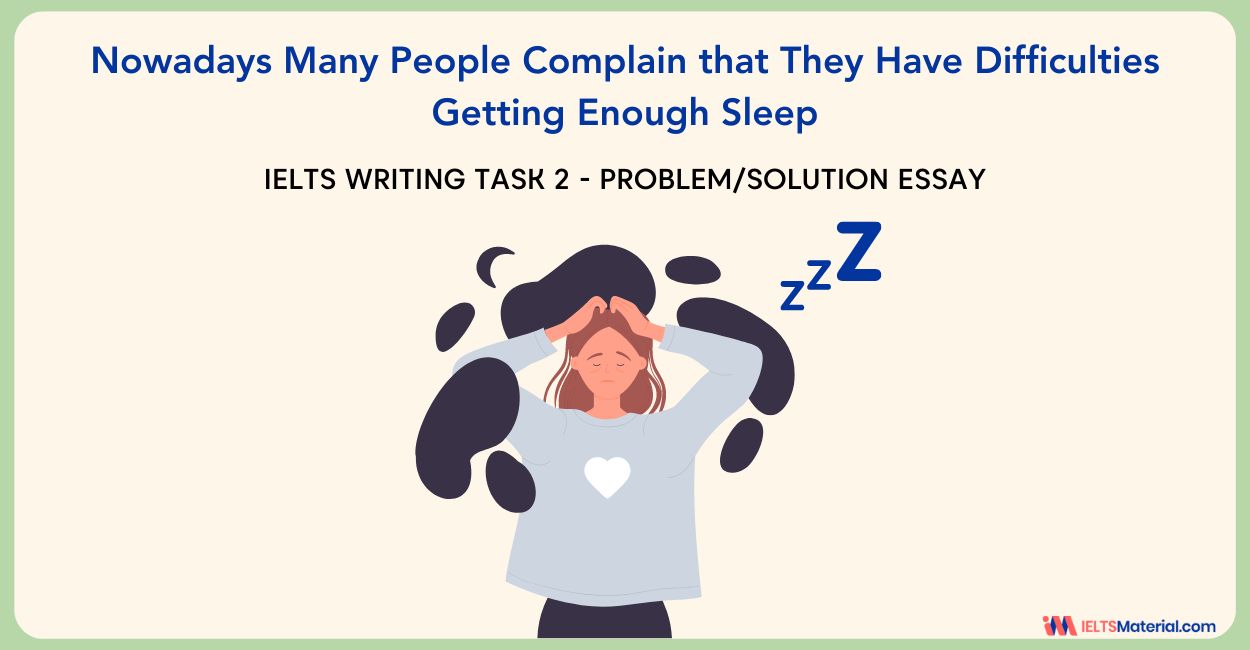
Nehasri Ravishenbagam

Janice Thompson

Kasturika Samanta

Post your Comments
Posted on Apr 16, 2022
Today, the cases of juveniles committing crimes are dramatically rising. While there are many contributing factors that are responsible for this negative trend, several ways are put forward to resolve it . This essay will discuss both the cause of the increase in juvenile delinquency and the measures taken to deal with this problem. The young offenders are the ones whose upbringings are usually subjected to the deprivation of love, care and affection from the family, which is the most important cause of their misdemeanors. A teenager growing up in a family where parents argue on a regular basis or are too occupied with are obviously given less love and attention than others whose parents are happy and often spend time together. As a result, the parents can hardly take notice of their unusual behaviors such as aggression, quick-temper,..which are signs of being susceptible to committing crime. Another cause of this phenomenon is the growing development of the technology, making it possible for teengers to access to television programs, internet, social media in a short at ease. At such an impressionable age, they are indubitably vulnerable to the misleading and violence – oriented content in these flatforms. A fighting game, for instance, enables the player to revive a lot of times and use violence to solve everything, instilling in the youngsters that this case is morally acceptable. Finally, teengers also imitate their friends to engage in violent incidents to impress them and become stand out or to prove that they are fashionable and updated. The solutions to this issue are undoubtedly come from schools and family as well as the community. Firstly, the family plays an essential role in the development of the juvenile’s characteristics and their acknowledge. Therefore, it is necessary that they make a close observation to the young and befriend them. Moreover, the schools are responsible for educating them about the drawbacks of violence and raising their awareness of not using force to solve disagreements. When it pertains to community, each person should avoid unsuitable manners and create a healthy environment for the children to thrive and prosper. To conclude, the reasons for underge crimes stem from family, the advance in technology and friends. However, the problem can be dealt with the aid of schools, families in particular and the community in general.
Posted on Apr 18, 2022
Band Score – 6
Concentrate on the correct usage of articles, prepositions and punctuation.
Pay attention to spelling and spacing between words.
Use C2 level of words.
Recent Articles
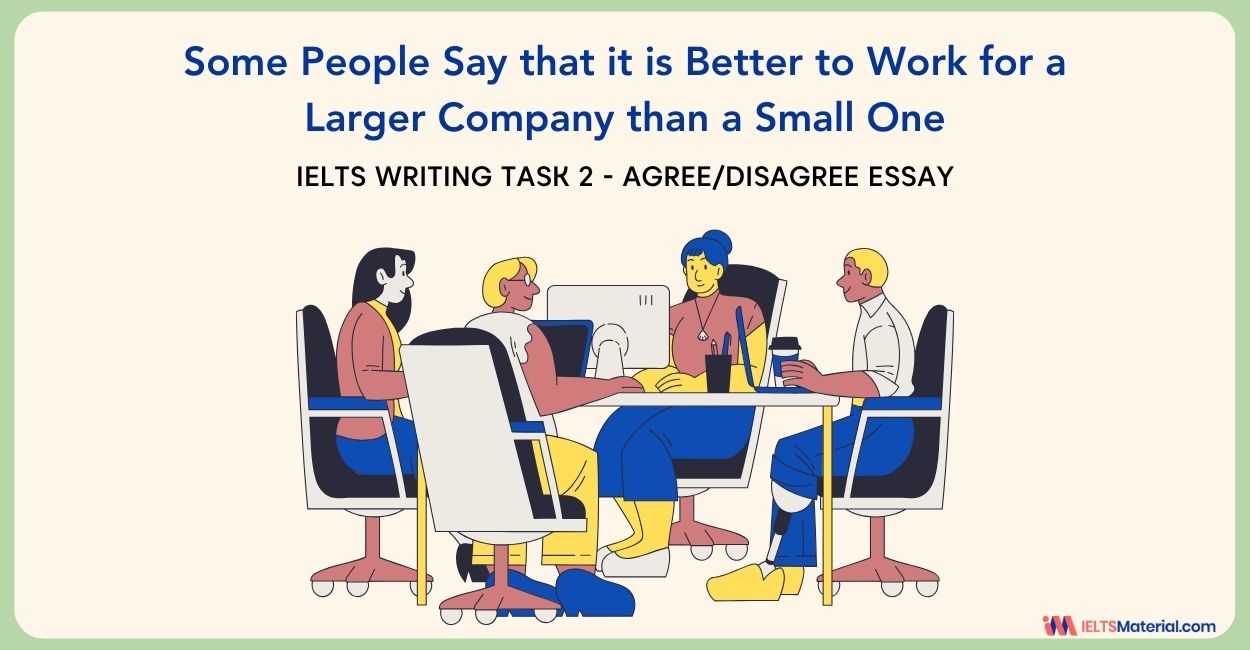
Raajdeep Saha
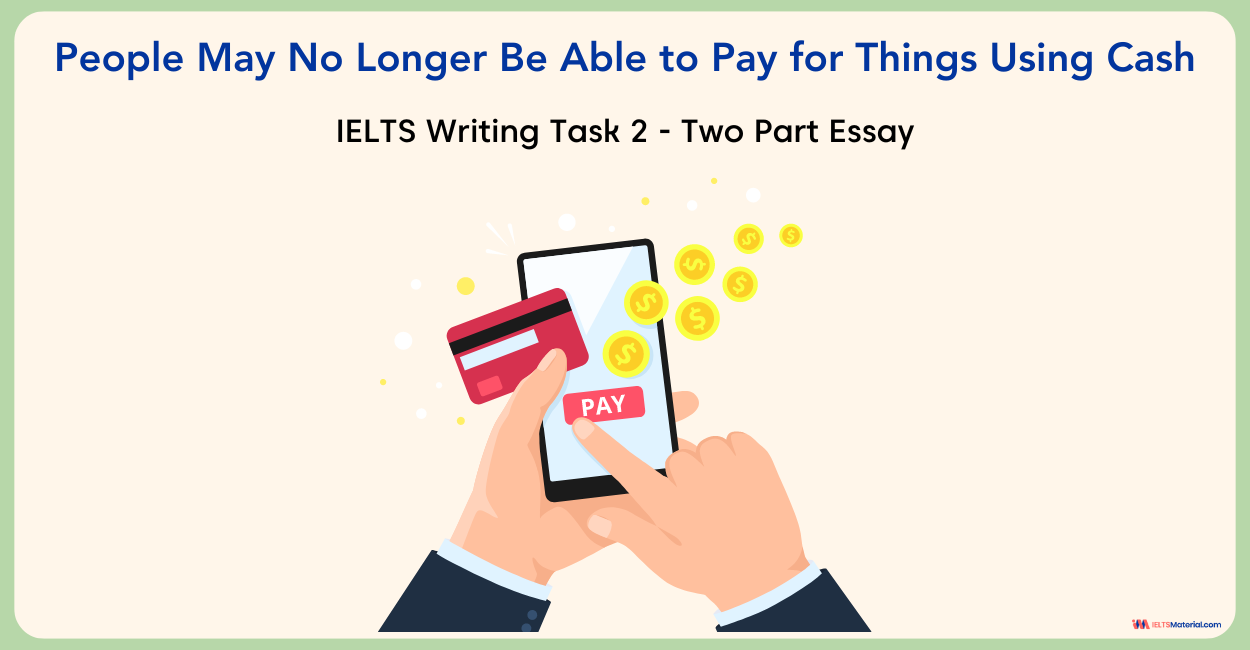
Our Offices
Gurgaon city scape, gurgaon bptp.
Please enter Email ID
Please enter phone number
Application
Please select any one
Already Registered?
Select a date
Please select a date
Select a time (IST Time Zone)
Please select a time
Mark Your Calendar: Free Session with Expert on
Which exam are you preparing?
Great Going!
Get a free session from trainer
Juvenile Delinquency Causes and Effects
Causes and effects of juvenile delinquency: essay abstract, effects and causes of juvenile delinquency: essay introduction.
- Juvenile delinquency statistics
- Causes of juvenile delinquency
- Effects of juvenile delinquency
- Prevention of juvenile delinquency
- Solutions to juvenile delinquency
Effects and Causes of Juvenile Delinquency: Essay Conclusion
Works cited.
Given the widespread family, societal, community, and individual costs that come with high rates of juvenile delinquency, one cannot help to wonder what the government is doing about it. It is also everybody’s concern that the government may not be doing enough to make a difference.
At this point, it is important to note that one can effortlessly appear non-delinquent after a correctional program while the delinquent characteristics are intact deep inside him/her. Delinquency programs for the youth have continually focused on individual behavior while ignoring community, family, and neighborhood factors, which are the most critical factors contributing to delinquent behavior.
It is common knowledge that the problem of juvenile delinquency is immense in society, and thus a change of tact is critical if society is to overcome this problem. This paper will explore other factors that lead to juvenile delinquency and propose solutions to this problem.
Delinquency refers to the violation of a law by a child. It is analogous to the commitment of a crime by an adult. Juvenile delinquency is an issue of great concern in law enforcement and correctional circles.
Every state in the U.S. aims to reduce the number of juveniles being recruited to delinquency and the number of juvenile delinquents recidivating.
Despite the efforts taken in a bid to reduce the number of delinquents and recidivists, the U.S. continues to record high numbers of juvenile offenders in juvenile correctional facilities. This situation, therefore, calls for a nuanced approach to the issue of juvenile delinquency.
It is critical to understand the extent of the growth of juvenile offending. Statistics released by bureaus in various states indicate that the rate of juvenile offenses is increasing. Offending patterns among groups previously described as risk groups for juvenile delinquency are worsening or, at least, unchanging.
There is, therefore, the need to analyze the causes of juvenile delinquency, evaluate the effects that delinquency has on society, and develop interventions that can lead to a reduction in the rate of delinquency and recidivism among juveniles. This paper describes the problem of juvenile recidivism and suggests ways to reduce the delinquency rate.
Juvenile Delinquency Statistics
A substantial percentage of arrests made each day in the U.S. comprises people below the age of 18. It is estimated that the percentage of violent crime arrests currently stands at about 17 % (Barker 1). “Juveniles accounted for 16% of all violent crimes arrests and 32% of all property crime arrests in 1999. They accounted for 54% of all arson arrests, 42% of vandalism arrests, 31 % of larceny arrests, and 33% of burglary arrests” (“Juvenile Justice” 1).
The number of juveniles engaging in delinquent behavior in various states depends on racial disparities. Currently, black juveniles constitute the highest number of youths being held in residential custody. Their number is almost twice the number of Hispanics held in residential custody and five times the number of white juveniles held in residential custody in the United States (“Juvenile Justice” 1).
In several cases, Juveniles are tried in adult courts. In fact, the Kansas and Vermont states in the U.S. have statutory provisions that allow the trial of juveniles as young as 10 years of age in adult courts. This situation may need review. It is because youth held in adult prisons tend to have a higher recidivism rate than those in juvenile systems (“Juvenile Justice” 1).
More than 1.7 million juvenile delinquency cases in the United States were disposed of in 1997. Two thousand of the aforementioned cases were criminal homicides. Forcible rape constituted 6,500, while aggravated assault cases totaled 67,900. Out of the 1.7 million, 180,000 cases were drug-related (“Juvenile Justice” 1).
The statistics outlined above show the seriousness of the issue of delinquency in the United States. Given the effects of delinquency on society, it is vital to understand the causes of delinquency. It is also critical to develop solutions and prevention strategies for delinquency.
Causes of Juvenile Delinquency
There have been heated debates among criminologists, psychologists, and sociologists concerning the possible causes of juvenile delinquency. The causes included in the following discussion have been proven through practical research.
One of the leading causes of delinquent behavior among juveniles is peer influence. Research shows that young people who form relationships with positive individuals and groups that pursue positive commitments tend to shun delinquent behavior. However, juveniles can engage in activities that do not have concrete objectives and commitments.
These activities will likely lead to volatile relationships that may encourage delinquent behavior. Examples of these behaviors include drinking and smoking. Other behaviors without commitment that juveniles may engage in include watching television and spending too much time watching movies.
Although most people attach no harm to these activities, research has proven that the more time peers spend watching television, the more likely they are to engage in delinquent behaviors (Mandel 1).
Family influence is another factor that has been proven to contribute to juvenile delinquency. It is even suspected that family influence contributes to delinquent behavior more than peer pressure. Research has proven that families in which there is no strong emotional bonding tend to have juveniles who turn out to be delinquent.
The reason is that the juveniles may develop psychological problems like rejection and low self-esteem, leading to delinquent behavior. Other causes of psychological problems like trauma and low self-esteem are also linked to delinquency. The two can originate from sources outside the family.
Children abused or exposed to family violence are likely to be delinquents. Some studies have linked genes to delinquency, arguing that children whom criminals and drug addicts raise are likely to become delinquent. Another risk is a family in which there are no effective communication channels. Children raised in this kind of family may have issues they want to address, but they may lack an audience.
This cause is likely to make them result in delinquent behavior. Non-traditional families like reconstituted families and single-parent families may also be a factor. Research has shown that children raised by single parents or divorcees tend to be more delinquent than their counterparts raised in traditional families (Mandel 1).
Race is a significant factor in predicting delinquent behavior. The main reason why race is a determinant factor for delinquency is that minority groups are not accorded the same treatment as other races. This makes them live disgruntled lives, which may make them have delinquent behavior.
Once the delinquency trend is set in a certain race, peer influence fuels recidivism and fresh offense. It is important to note that numerous scholars argue that race is not the factor, but racism is (Mandel 1).
Effects of Juvenile Delinquency
Juvenile delinquency is a big problem that affects not only the victims of the delinquents but also the juvenile delinquents themselves, their families, and even society as a whole. Juvenile delinquents may not be able to predict the effect of their crimes on themselves, but, as stated, they are seriously affected by these crimes.
Most of these crimes make the juvenile lose his/her freedom because he/she may be placed on probation or even incarcerated. This will also affect the academic welfare of the juvenile because he or she will miss academic activities that will take place during probation or incarceration.
In cases where the juvenile is placed in a residential center for the detention of juveniles, he/she may be influenced by more experienced juvenile delinquents (Barker 1). It will make the juvenile more likely to recidivate and suffer re-offense consequences. The delinquency of the minor may even dictate his or her career choices in the future.
The trauma of having a juvenile delinquent in a family can create instability for other family members. The family has to meet the needs of the juvenile in trouble and raise lawyer’s fees. The family also has an ethical obligation to the victim of the delinquent. Families are required to attend counseling sessions as a group. This is usually costly and disruptive (Barker 1).
Juvenile delinquency is closely related to sexual behavior, drug use, gang involvement, etc. All these negatively affect the community because it makes the community unsafe and makes the government spend colossal sums of money on school safety and law enforcement.
As stated, juvenile delinquency has severe effects on some societal groups. It, therefore, affects society negatively by affecting the community, families, individuals, etc. The problem also challenges government agencies, organizations, educators, faith communities, and politicians (Barker 1).
Prevention of Juvenile Delinquency
Due to the contribution of family influence to juvenile delinquent behavior, it is vital to ensure that families positively impact children. This can be achieved by ensuring strong emotional bonding in the family and by laying out effective strategies for communication.
Children raised by families that do not conform to the traditional family should be closely watched to curb the development of delinquent behavior. Schools should also ensure that they know the backgrounds of children in order to fill the gaps that may be left by the parents (Saminsky 1). For instance, teachers can help to counsel a child who witnesses violence at home or a child whose parent is a criminal.
Parents should ensure that they closely monitor the kind of company that their children keep. They should ensure their children engage in productive social activities (Saminsky 1). These measures will help reduce the chances of their children becoming delinquents. In school, teachers should keep a close eye on pupils to ensure that they know their activities.
Pupils should be appropriately searched in school to ensure they do not carry guns and drugs. This step will ensure that delinquent pupils do not influence others. It will also help identify delinquent children so they can be counseled or even sent for correctional services.
Although controversial, another way of preventing delinquency is reducing or eradicating racism. This method will target delinquents in minority groups. It will help reduce the number of juveniles in these minority groups who commit offenses because they will not commit racism-inspired crimes.
It will also help boost teenagers’ self-esteem in these minority groups. Thus instances of offenses caused by low self-esteem will be limited in these minority groups (Saminsky 1).
Solutions to Juvenile Delinquency
The best way to reduce the number of delinquency cases is by using the preventative measures outlined in the paragraph above. The preventative measures should be holistic in the sense that they should include all the people in the lives of the juveniles.
The juveniles should be monitored and guided while at home and counseled and monitored while in school. Juveniles who are at high risk of developing delinquent behavior should be watched closely and given special treatment so that they do not end up offending (Rose 1).
Another way of reducing the number of delinquency cases is by reducing the rates at which juvenile delinquents recidivate. It can be achieved by having legislation that ensures that juveniles are corrected differently and in facilities different from the ones used for adult correction.
The reason is that, from the statistics section, juveniles corrected in the same facilities as adult offenders are more likely to recidivate than their counterparts in juvenile facilities. The recidivism rates of young offenders can also be reduced by having a program to correct delinquents. This is most appropriately implemented while the delinquents are in custody.
The program should be holistic, and thus it should consist of counseling services offered by a psychologist, recreational facilities, and training (Rose 1). The counseling services will give a platform in which the juveniles can freely share their experiences, and thus their healing process can be sped up.
The recreational facilities will give the juveniles alternative hobbies that will occupy their time after they are released from custody. Thus they will have less time to consider re-offending. Lastly, the training will equip the juvenile who may have quit school with entrepreneurial skills that they can utilize to make money after they are released from custody. It will, therefore, help to reduce the number of cases where juveniles re-offend due to financial problems.
Juvenile delinquency can also be reduced by effective policing that will ensure that community criminals do not recruit juveniles into crime. It is common to hear of gangs using schoolchildren to market drugs and carry assault weapons. This practice should be discouraged by vigilance from parents and teachers and effective community policing.
From the discussion above, it is clear that delinquency is an enormous societal problem. Juvenile delinquency is caused by several factors, including peer influence, influence by the juvenile’s family, race, and other related factors like low self-esteem and trauma.
The effects of delinquency are far-reaching, and they, therefore, affect the community, victims of the delinquent, society as a whole, and even the delinquents themselves. Therefore, it is vital to address this issue to reduce the rates of offense and re-offense.
Several interventions can be used to prevent and reduce delinquency and recidivism. These interventions can be implemented in the family, school, or even correctional facilities. School and family-level interventions are mainly aimed at preventing recidivism, while the interventions implemented at correctional facilities are aimed at reducing recidivism.
Thus, these interventions must be taken seriously to reduce the number of delinquents in society. This will, in turn, reduce the number of delinquency victims, the number of affected families, and the amount of resources that the government will spend on law enforcement and correctional services. Therefore, it will lead to a better society.
Barker, Leslie. “ The Effects of Juvenile Delinquency ”. Ehow.com . 2011.
Juvenile Justice. “Basic Statistics”. Pbs.org . 2011.
Mandel, Sharon. “ What Causes Juvenile Delinquency? ” Filthylucre.com . 2008.
Rose, Nancy. “ The Solution to Juvenile Delinquency is Simple ”. Public.asu.edu . 2010.
Saminsky, Alina. “ Preventing Juvenile Delinquency : Early Intervention and Comprehensiveness as Critical Factors”. Studentpulse.com . 2011.
Cite this paper
- Chicago (N-B)
- Chicago (A-D)
StudyCorgi. (2020, January 12). Juvenile Delinquency Causes and Effects. https://studycorgi.com/juvenile-delinquency-causes-and-effects/
"Juvenile Delinquency Causes and Effects." StudyCorgi , 12 Jan. 2020, studycorgi.com/juvenile-delinquency-causes-and-effects/.
StudyCorgi . (2020) 'Juvenile Delinquency Causes and Effects'. 12 January.
1. StudyCorgi . "Juvenile Delinquency Causes and Effects." January 12, 2020. https://studycorgi.com/juvenile-delinquency-causes-and-effects/.
Bibliography
StudyCorgi . "Juvenile Delinquency Causes and Effects." January 12, 2020. https://studycorgi.com/juvenile-delinquency-causes-and-effects/.
StudyCorgi . 2020. "Juvenile Delinquency Causes and Effects." January 12, 2020. https://studycorgi.com/juvenile-delinquency-causes-and-effects/.
This paper, “Juvenile Delinquency Causes and Effects”, was written and voluntary submitted to our free essay database by a straight-A student. Please ensure you properly reference the paper if you're using it to write your assignment.
Before publication, the StudyCorgi editorial team proofread and checked the paper to make sure it meets the highest standards in terms of grammar, punctuation, style, fact accuracy, copyright issues, and inclusive language. Last updated: August 23, 2023 .
If you are the author of this paper and no longer wish to have it published on StudyCorgi, request the removal . Please use the “ Donate your paper ” form to submit an essay.
Juvenile Delinquency - Essay Examples And Topic Ideas For Free
Juvenile delinquency, representing a range of antisocial behaviors committed by minors, poses significant challenges to families, communities, and legal systems. Essays could explore the sociological, psychological, and economic factors contributing to juvenile delinquency, dissecting the complex interplay of family dynamics, peer influence, and social deprivation. The discourse might extend to the examination of preventive interventions and rehabilitative programs aimed at addressing the root causes of delinquent behavior and promoting social reintegration. Discussions could also focus on the legal frameworks governing juvenile justice, evaluating the balance between punishment, deterrence, and rehabilitation. Moreover, the exploration of case studies and longitudinal research shedding light on the long-term outcomes of juvenile delinquents and the effectiveness of various interventions could provide a rich analysis of the multifaceted issues surrounding juvenile delinquency and the ongoing efforts to ameliorate its societal impacts. We’ve gathered an extensive assortment of free essay samples on the topic of Juvenile Delinquency you can find in Papersowl database. You can use our samples for inspiration to write your own essay, research paper, or just to explore a new topic for yourself.
Social Control Theory and Juvenile Delinquency
The juvenile justice system handles legal matters involving a juvenile, defined in most states as a person who is younger than 18 years of age. Juvenile Delinquency despite popular misconception is not crime. Delinquencies are acts committed by juveniles that would be crimes if committed by adults. One of the main focuses of the juvenile justice system that separates it from the regular justice system is the focus on rehabilitation instead of punishment. Juveniles are generally seen as easier to […]
On Juvenile Delinquency and Drug Use
The phenomenon of juvenile delinquency comes from a definition where an individual age from seven to eighteen commits or violates a state law. An example of a juvenile delinquency can be something as minor as staying out past curfew, underage smoking or underage of substances uses to something more significant as to robbing a store or murder. In this analytic essay, I will talk about how a delinquent behavior and how a sociological perspective fits into that behavior. Then, I […]
Revisiting the Controversy: should Juveniles be Tried as Adults?
How much more does the juvenile delinquency rate has to rise before we realize action is required? The Juvenile Court System was created so young offenders could be dealt with individually and tried more effectively. The system can provide rehabilitation for any juvenile seen to be transgressing too much. Ideally, the youth are taking advantage of the system and committing violent crimes because they believe it will be easier for them to avoid a stricter sentence (Berg, 2020). Losing people […]
We will write an essay sample crafted to your needs.
Juvenile Justice System and Juvenile Delinquency
Juvenile Delinquency is defined as the committing of criminal acts by a young person who is well below the age of being able to be prosecuted criminally. It is also referred to as juvenile offending. These behaviors are usually beyond the control of their parents or guardians, causing law enforcement to step in. Juveniles can never be convicted and sentenced to death or life in prison unless they are tried as an adult. A status offender is defined as a […]
Juvenile Delinquency Correlation to Adult Crime
The positive correlation between the lack of treatment programs and depression across juvenile delinquency is strongly intact, and improvements in our legal system are much needed. Ng, Shen, Sim, Sarri, Stoffregen, & Shook, (2011) bring to our attention that despite current evidence clearly showing higher rates of depression among incarcerated youth, we have still failed to look at how depression is linked with incarceration. Their findings show that charging youth as adults in our criminal justice system is a highly […]
Three Problems of the Criminal Justice System and how to Fix them
The criminal justice system has an important role in society to maintain order and to ensure that law is equal and fair; no matter age, ethnicity, race, sex, or social economical status. Unfortunately, this is not true within the current judicial system. Racial discrimination, youth incarceration, and health related infirmities result from incarceration (Simonson, 2017). Three Problems of the Criminal Justice System and How to Fix Them There are many problems that plague our current criminal justice system. The problems […]
Divorce and Juvenile Delinquency
Introduction Crime can be considered to be one of the toughest challenges that society has tried to manage over the year. This increase in crime has raised the concerns of developing new tactics to prevent crime and reduce the likelihood of crime happening. In order for the decrease in crime to happen, it is paramount that individuals understand the many dynamics of crime and why it is on the steady rise. Research has been shown to identify a correlation between […]
Crime and Deviant Behavior: Birds of a Feather Flock Together
Determining causes of crime and deviant behavior is a key goal for law enforcement officers in order for them to effectively implement public policy and better protect civilians. One contemporary theory that seeks to understand the causes of crime and deviance, and conceptualized by Ronald Akers and Robert Burgess, is the social learning theory of crime. According to this theory, crime is a result of learned social behavior. It incorporates Edwin H. Sutherland’s theory of differential association. Sutherland proposed nine […]
Juvenile Correctional Counselor
Introduction In the criminal justice system there are numerous available career opportunities one can choose. By definition, criminal justice is “the system of law enforcement, involving police, lawyers, courts, and corrections, used for all stages of criminal proceedings and punishment” (D. 2018). Any career one may choose will follow the three-tiered system found within criminal justice: law enforcement, the court system, or the correctional aspect of criminal justice. For this paper, I have chosen to discuss what entails the career […]
Underage Drinking for Americans
Since the Colonial era, consumption of alcoholic beverages has been a piece of American culture, its use by the youth has been acknowledged by adults as a major aspect of progression towards maturity (NIH, n.d.). This research paper will examine if underage drinking decrease or increase due to the age limit law, and also what theories explain why Juvenile participated in this kind of status offense. After gathering information from scholarly articles and reliable organizational sources, I was able to […]
Presenting Juveniles as Adults in the Criminal Justice System
The word most frequently used to describe the growth in the rate of violent crime among children 17 years old and younger is epidemic. The alarming rate at which children are committing crimes has increased the amount of questions on what should be done with these juveniles. The National Center for Juvenile Justice states how “Every state but Hawaii now allows juveniles to be tried as adults for certain crimes,” so why are people struggling with laws allowing young offenders […]
Parental Incarceration
Introduction The rate of imprisonment in the United States has tripled between 1980 and 2000, making incarceration a growing area of national concern. At least 1.9 million minors have lost a parent due to incarceration, drawing developmental researchers’ attention to the ramifications of parental incarceration on these minors (Davis and Shlafer, 2016). A 2007 report from the United States Justice Department revealed that at least 50.4% of children ages 10-17 have a parent in a federal prison (Kautz, 2017). Although […]
Juveniles Tried as Adults in Court
Every year, 200,000 adolescents are put under the adult criminal justice system and account for 1,200 of the 2 million individuals housed in prisons in the U.S (theatlantic.com). Youth who commit crimes that could lead them to be dangerous for society, should be tried as adults. No one should receive special treatment in court, jail, or prison because people of all ages commit the same type of crimes every day and should be held accountable. Therefore, both juveniles and adults […]
Juveniles Charged and Tried as Adults
Children and adults are different, and I think we can all agree on that fact. The United States law routinely recognizes when a juvenile is prohibited from buying a pack of cigarettes, beer, or voting in the U.S Presidential elections. In most states and District of Columbia, individuals under 18 years of age are consider juveniles. In fact, the first juvenile court was established in 1899 in Cook County Chicago, Illinois (Hemmns, Brody, Spohn, 2016, pp 143). Over the last […]
Juveniles should not be Tried as Adults in the Legal System
Growing up everyone has friends of all social classes and behaviors. Many live wealthy lifestyles, and others not so fortunate. Many children loved going home after school and living the “Leave it to Beaver” home life. Others had a home life that was sad and created angst. They literally had nothing to eat and no safe place to sleep or rest their heads. Having hardworking and devoted parents is essential to create a better society. This makes a big difference […]
Juvenile Offenders
The topic of juvenile offenders being tried and punished as adults is a very touchy subject. Some people support the idea and many are opposed to it. Suppose two young teens age 14 get into an altercation and one decides to stab the other in the heat of the moment. This teen has committed a crime and should get punished for his or her actions. The question is whether the youth should get tried and punished in Juvenile Court or […]
Setencing Juveniles as Adults
There are about 41,095 inmates who are facing life in prison without parole. Among these, 6.2% of those inmates (2,574) committed these crimes as juveniles. (Sentencing Juveniles) A vast majority of inmates are being held behind bars for crimes they committed under the age of 18. They aren’t given another chance to become law abiding citizens for a poor decision they made when they were just young rebellious teens. In fact, the united states is one of the only countries […]
Issues of Violence in Schools
With an increased rate in juvenile delinquency, I chose to discuss the violence in schools; underlining the root of the issue, what policies are currently in place, and what steps are needed to create a more effective policy to resolve the issue. Some of the risk factors of school and youth violence come from prior history of violence, drug, alcohol and tobacco use, association with delinquent peers, poor family function, poor grades in school and poverty in the community. "Data […]
The Trending Battle Royale Video Game Fortnite
In today's society there is a lot of violence that is broadcast through many forms of media. There are violent video games, movies and even real life violence on the news and internet videos. Due to this over exposure of violence people are being desensitized to it. We tend to normalize things when we are exposed to it on a daily basis. The same thing happens with violence, being over exposed to it can cause people to become numb to […]
The Damage of Divorce on Children
Divorce has been an very prevalent and staggering topic in our current era of being doubly so as a citizen of the United States of America. Before even conducting this study, I was always curious and confused as to the outcome of divorce more specifically the effects on the child. I was always asking family members or those in my secondary group how the experience was and what did you take from what happend or was happening. The majority of […]
Essay about Juvenile Justice
By far the most common form of direct racial bias that Tim will come into contact with, is racial profiling, whereby authorities use stereotypes about a person’s race to single them out for greater scrutiny. Given that Tim’s neighborhood shows clear signs of social disorganization, it can be inferred that there are likely more police patrols in his city, due to the high crime rate. Jones-Brown, Stoudt, Johnston, & Moran (2013) identify “stop, question, and frisk” encounters that Tim is […]
Fair or Foul: Police Authority Limited with Juveniles
Juveniles are the young criminal offenders who have been arrested and convicted because of their delinquency in the society. It is until one turns the age of an adult that is when they are taken to adult prisons otherwise they are kept in juvenile prisons so as to protect them from being harmed by adult prisoners (Shoemaker 2017). The Human Rights protects the younger offender while in prison to ensure that they are not subjected to any harassment or mistreatment […]
Should Juveniles be Bunished as Adults?
Introduction When it comes to individuals committing serious or harsh crimes, a sentence should match the crime that was committed. However, say this individual is under the age of 18. Should that make a difference in the amount of time they should serve, or should they serve any time at all? Based on age, states or locations, crimes committed and many other factors, we will discuss whether or not juveniles should be tried as adults. There are many arguments back […]
Environmental Pressure of Adolescent Gang Violence in Inter-City’s
Introduction Poverty is the worlds biggest social problem. Within it there are lasting consequences for families forced to dwell in not so family friendly neighboring communities due to lack of income. There’s a stem that leads to every problem, and at the bottom of poverty lies gang affiliation in adolescent teens in poverty that of which are at an all-time high. I trust you have heard the phrase “You’re the average of the five people you spend the most time […]
The Tough Guy Image in Black Families
Poverty can lead to the black male adherence to the tough guy image in black families. The tough guy image is the leading cause of death amongst black families. The fear of black on blacks is another cause by the tough guy image. According to the book the overwhelming number of offenses committed by African American are directed towards other African Americans. Interpersonal amongst blacks is the leading cause of death for blacks. Black males are known to make up […]
Incarcerated Adolescents Juveniles Confined as Adults for Homicide
Lionel Alexander Tate, who was charged with first degree murder, is America’s youngest citizen to be sentenced to life in prison without a chance of parole. In 1998 when he was 12, Tate battered six-year old Tiffany Eunick to death when attempting to duplicate professional wrestling moves that he saw on television. This surprising act is one of many instances that strikes a question: at what age should someone be incarcerated as an adult? There is much controversy over whether […]
My Opinion about Criminal Law
Question 1 My personal opinion is that parent responsibility laws should be on a case by case basis. Parenting is by no means an unfettered right and, as with many rights, it carries significant responsibilities. I do think that some of these responsibilities should be legal. In some of the most heinous crimes, parents should be criminally liable for the acts of their children. While there is no clear consensus about the causes of juvenile delinquency, I do feel that […]
Law Enforcement Systems
Criminal Justice is defined as the system of law enforcement, involving police, lawyers, courts and corrections, used for all stages of criminal proceedings and punishment. Criminal justice professionals are both consumers and producers of research. The consumers of all research findings, such as police officers, are better at understanding how research is being conducted within their department. The producers of research, such as probation officers, try different methods in order to communicate with criminals better to decrease the likely hood […]
ADHD Disorder in Juvenile Delinquents
There are many mental disorders that juvenile offenders exhibit. The most common behavioral disorder found in juvenile delinquents is ADHD (Rouse and Goldstein 1999). Like all children that act in the moment and don't think about future consequences, youth with ADHD have little self-control (Rouse and Goldstein 1999). Researchers found that children with attention deficit disorder are at a higher risk for substance abuse such as alcohol, marijuana, tobacco etc. (Sibley et al. 2014) In their study results they found […]
The Main Roles and Responsibilities of the Juvenile Justice System
Originally, the juvenile court was thought of as a social service organization that dealt with protecting and solving the problems of children in trouble. The primary role of the juvenile court was not to establish guilt, but rather to rehabilitate youthful offenders by eliminating the problem causing the juvenile to engage in delinquent behavior. Emphasis was placed on rehabilitation, attention, and education, and these beliefs became the basis of what is known as the juvenile justice system. The juvenile justice […]
Additional Example Essays
- Socioautobiography Choices and Experiences Growing up
- A Class Divided
- Gender Inequality in Education
- Homelessness in America
- End Of Life Ethical Issues
- The Oppression And Privilege
- Macbeth Downfall in the Context of Violence
- Essay About Theme for English B
- Solution of Child Labor Problem
- Logical Fallacies in Letter From Birmingham Jail
- Importance Of Accountability
- Oedipus is a Tragic Hero
How to Write an Essay About Juvenile Delinquency
Understanding juvenile delinquency.
Before writing an essay about juvenile delinquency, it's crucial to understand what constitutes this social issue. Juvenile delinquency refers to the involvement of individuals under the age of 18 in behaviors that violate the law. Begin your essay by defining juvenile delinquency and explaining its significance in society. It's important to discuss the various factors that contribute to juvenile delinquency, such as family dynamics, peer influence, socio-economic status, and educational background. Understanding the broader context, including the psychological and sociological perspectives on why young people commit crimes, is essential for a comprehensive analysis.
Developing a Thesis Statement
A strong essay on juvenile delinquency should be centered around a clear, concise thesis statement. This statement should present a specific viewpoint or argument about juvenile delinquency. For example, you might discuss the effectiveness of rehabilitation programs, analyze the impact of family and social environment on youth behavior, or argue the need for reform in the juvenile justice system. Your thesis will guide the direction of your essay and provide a structured approach to your topic.
Gathering Supporting Evidence
To support your thesis, gather evidence from credible sources, such as academic studies, government reports, and case studies. This might include statistics on juvenile crime rates, research findings on the causes of delinquency, or examples of successful intervention programs. Use this evidence to support your thesis and build a persuasive argument. Be sure to consider various perspectives and address potential counterarguments.
Analyzing the Causes and Effects of Juvenile Delinquency
Dedicate a section of your essay to analyzing the causes and effects of juvenile delinquency. Discuss how factors like poverty, education, peer pressure, and family relationships can influence a young person's likelihood of engaging in delinquent behavior. Explore the short-term and long-term effects of delinquency on the individual, their family, and society, including the potential for future criminal behavior and societal stigmatization.
Concluding the Essay
Conclude your essay by summarizing the main points of your discussion and restating your thesis in light of the evidence provided. Your conclusion should tie together your analysis and emphasize the importance of addressing juvenile delinquency effectively. You might also want to suggest areas for future research, policy development, or preventive strategies to reduce the incidence of juvenile delinquency.

Reviewing and Refining Your Essay
After completing your essay, review and refine it for clarity and coherence. Ensure that your arguments are well-structured and supported by evidence. Check for grammatical accuracy and ensure that your essay flows logically from one point to the next. Consider seeking feedback from peers, educators, or professionals in juvenile justice to further improve your essay. A well-written essay on juvenile delinquency will not only demonstrate your understanding of the issue but also your ability to engage critically with complex social problems.
1. Tell Us Your Requirements
2. Pick your perfect writer
3. Get Your Paper and Pay
Hi! I'm Amy, your personal assistant!
Don't know where to start? Give me your paper requirements and I connect you to an academic expert.
short deadlines
100% Plagiarism-Free
Certified writers

An official website of the United States government, Department of Justice.
Here's how you know
Official websites use .gov A .gov website belongs to an official government organization in the United States.
Secure .gov websites use HTTPS A lock ( Lock A locked padlock ) or https:// means you’ve safely connected to the .gov website. Share sensitive information only on official, secure websites.
NCJRS Virtual Library
Introduction to juvenile delinquency, additional details.
175 Fifth Avenue , New York , NY 10010 , United States
No download available
Availability, related topics.
An official website of the United States government
The .gov means it’s official. Federal government websites often end in .gov or .mil. Before sharing sensitive information, make sure you’re on a federal government site.
The site is secure. The https:// ensures that you are connecting to the official website and that any information you provide is encrypted and transmitted securely.
- Publications
- Account settings
Preview improvements coming to the PMC website in October 2024. Learn More or Try it out now .
- Advanced Search
- Journal List
- BJPsych Bull
- v.41(1); 2017 Feb

Juvenile delinquency, welfare, justice and therapeutic interventions: a global perspective
Susan young.
1 Imperial College London, London, UK
2 Broadmoor Hospital, Crowthorne, UK
Richard Church
3 South London and Maudsley NHS Foundation Trust, London, UK
This review considers juvenile delinquency and justice from an international perspective. Youth crime is a growing concern. Many young offenders are also victims with complex needs, leading to a public health approach that requires a balance of welfare and justice models. However, around the world there are variable and inadequate legal frameworks and a lack of a specialist workforce. The UK and other high-income countries worldwide have established forensic child and adolescent psychiatry, a multifaceted discipline incorporating legal, psychiatric and developmental fields. Its adoption of an evidence-based therapeutic intervention philosophy has been associated with greater reductions in recidivism compared with punitive approaches prevalent in some countries worldwide, and it is therefore a superior approach to dealing with the problem of juvenile delinquency.
Recent years have seen sustained public and academic interest in criminality and mental health, with attention often focused on antisocial behaviour by children and adolescents. The scale of the problem of juvenile delinquency has provoked mixed responses from governments and the media across the world, with calls for improved rehabilitation and support for juvenile offenders competing with voices advocating more punitive approaches. 1 Meanwhile, decades of rigorous academic scrutiny have shed light on the complex and diverse needs of children who come into conflict with the law. 2 – 5 Much of the growing body of literature on juvenile offenders shows considerable overlap between criminological, social and biomedical research, with a consensus emerging around the significance of a developmental understanding of the emergence of juvenile delinquency.
Importantly, juvenile offenders have consistently been identified as a population that suffers from a markedly elevated prevalence and severity of mental disorder compared with the general juvenile population. 6 , 7 Meeting the needs of these young offenders presents practical and ethical challenges concerning treatment and management, including liaison with other agencies.
What is juvenile delinquency?
Who counts as juvenile.
Juvenile delinquency is a term commonly used in academic literature for referring to a young person who has committed a criminal offence, although its precise definition can vary according to the local jurisdiction. The specific reasons underlying these differences are unclear, but they may arise from the lack of an agreed international standard. 8
A ‘juvenile’ in this context refers to an individual who is legally able to commit a criminal offence owing to being over the minimum age of criminal responsibility, but who is under the age of criminal majority, when a person is legally considered an adult. The minimum age of criminal responsibility varies internationally between 6 and 18 years, but the age of criminal majority is usually 18 years.
In some cases individuals older than 18 years may be heard in a juvenile court, and therefore will still be considered juveniles; indeed, the United Nations (UN) defines ‘youth’ as between 15 and 24 years of age. The term ‘child delinquents’ has been used in reference to children below the age of 13 who have committed a delinquent act, 9 although elsewhere ‘children’ are often defined as being under 18 years of age. The term ‘young offenders’ is broad, and can refer to offenders aged under 18 years or include young adults up to their mid-20s.
What is a crime?
A ‘delinquent’ is an individual who has committed a criminal offence. Delinquency therefore encompasses an enormous range of behaviours which are subject to legislation differing from one jurisdiction to another, and are subject to changes in law over time. Whereas acts of theft and serious interpersonal violence are commonly considered to constitute criminal offences, other acts including alcohol consumption and sexual behaviour in young people are tolerated to very differing degrees across the world. Sometimes these differences arise as a consequence of historical or cultural factors, and they may be underpinned by traditional religious laws, such as in some Middle Eastern countries. Some offences may be shared between jurisdictions but be enforced to differing standards – for instance, ‘unlawful assembly’, often used to prevent riots, is applied in Singapore to young people meeting in public in groups of five or more as part of police efforts to tackle youth gangs. Furthermore, ‘status offences’ – acts that would be permissible in adults but criminalised in children, such as consumption of alcohol or truancy – not only vary between jurisdictions, but contribute to discontinuity when comparing juvenile delinquency with adult populations in the same jurisdiction.
Lack of clarity can also arise in jurisdictions where a young offender is processed via a welfare system rather than a youth justice process. Countries with a high minimum age of criminal responsibility may not technically criminalise young people for behaviour that would normally be prosecuted and therefore classed as ‘delinquent’ elsewhere.
Not all incarcerated juveniles are ‘delinquent’, since some may be detained pre-trial and may not be convicted of an offence. Even if convicted, it would be wrong to assume that every ‘juvenile delinquent’ meets criteria for a diagnosis of conduct disorder; offences vary considerably and may not be associated with a broad repertoire of offending behaviour. Also, most ‘juvenile delinquents’ do not pose an immediate risk of violence to others, and the vast majority of convicted juveniles serve their sentences in the community.
To meet the diagnostic criteria of conduct disorder requires evidence of a persistent pattern of dissocial or aggressive conduct, such that it defies age-appropriate social expectations. Behaviours may include cruelty to people or animals, truancy, frequent and severe temper tantrums, excessive fighting or bullying and fire-setting; diagnosis of conduct disorder can be made in the marked presence of one of these behaviours. 10
Overall, the term ‘juvenile delinquent’ is used extensively in academic literature, but requires some care. It can be a potentially problematic term, and in some contexts can strike a pejorative tone with misleading negative assumptions. For several years the UN has used the phrase ‘children in conflict with the law’ to describe the breadth of the heterogeneous group of individuals under the age of 18 who have broken the law or are at risk of doing so.
General principles of juvenile justice
Welfare v. justice models.
The sentencing of an individual convicted of a criminal offence is largely driven by three key considerations: retribution (punishment), deterrence and rehabilitation. In the case of juvenile offenders the principle of rehabilitation is often assigned the greatest weight. 11
Special consideration for juveniles within the criminal justice system is not a new concept. In Roman law, the principle of doli incapax protected young children from prosecution owing to the presumption of a lack of capacity and understanding required to be guilty of a criminal offence. Most countries have some provision for special treatment of children who come into conflict with the law, however, the degree to which this is provided varies across the world. 1 , 12 In some countries a ‘welfare’ model prevails, which focuses on the needs of the child, diagnosis, treatment and more informal procedures, whereas other countries favour a ‘justice’ model, which emphasises accountability, punishment and procedural formality.
Belgium is frequently cited as an example of a country with a strong welfare process, supported by a high minimum age of criminal responsibility of 18 years. Similarly, France built a strong welfare reputation by placing education and rehabilitation at the centre of youth justice reforms in the 1940s. New Zealand in 1989 established the widely praised system of Family Group Conferencing as an integral part of youth justice, with a focus on restoration of relationships and reduction of incarceration that would be considered part of a welfare approach. In contrast, the UK and the USA have traditionally been associated with a justice model and low age of criminal responsibility – 10 years in England and Wales, and as low as 6 years in several US states.
Within welfare or justice models, a young person may at some point be ‘deprived of liberty’ – defined as any form of detention under official authorities in a public or private location which the child is not permitted to leave. Locations in which children may be deprived of liberty include police stations, detention centres, juvenile or adult prisons, secure remand homes, work or boot camps, penitentiary colonies, locked specialised schools, educational or rehabilitation establishments, military camps and prisons, immigration detention centres, secure youth hostels and hospitals. 13
Between the less and more punitive systems
The UN supports the development of specialised systems for managing children in conflict with the law. When the first children's courts were set up in the USA in the 1930s, they were widely praised as a progressive system for serving the best interests of the child. Although informality was championed as a particular benefit, in the 1960s substantial concerns arose about due process and the protection of the legal rights of minors. The subsequent development of formal juvenile courts occurred in the context of a continuing ethos of rehabilitation of young people, with a move away from incarceration of juveniles in the 1970s, especially in Massachusetts and California. However, following a marked peak in juvenile offending statistics during the 1980s and 1990s, public and political opinion swung firmly in a more punitive direction. This was accompanied by legal reforms that increased the severity of penalties available to juvenile courts and lowered the age threshold for juveniles to be tried in adult criminal courts.
When the UN Convention on the Rights of the Child entered into force in 1990, the USA was not a signatory owing to 22 states permitting capital punishment of individuals who had committed their crimes as juveniles. It is reported that 19 juvenile offenders were executed in the USA between 1990 and 2005. Although this number may represent a small percentage of the total who faced the death penalty in the USA during that period, the practice was widely criticised by international bodies and organisations. 14 A landmark ruling in the US Supreme Court 15 outlawed the execution of juvenile offenders in the USA, but to date a small number of countries worldwide still implement this practice, sometimes as a result of religious laws.
However, it would be wrong to assume that welfare systems are automatically preferable to a juvenile justice approach, since welfare arrangements can be equally coercive in terms of deprivation of liberty of juveniles. They may lack due process, safeguards for obtaining reliable evidence from young people, processes for testing evidence, and procedures for scrutiny or appeal following disposal.
Trends in youth crime
The USA witnessed a dramatic increase in arrest rates of young people for homicide and other violent crimes in the 1980s and 1990s, sometimes referred to as the ‘violence epidemic’. 16 The ensuing moral panic led to harsh and punitive policy changes in juvenile justice and, although official statistics document a subsequent fall of 20% in court case-loads between 1997 and 2009, victimisation surveys have indicated a degree of continuity in high levels of offending, consistent with a reported increase in juvenile offending between 2000 and 2006. 17
In common with the USA and several other high-income countries, the UK also experienced a rise in juvenile offending in the 1980s and 1990s, but figures from the Youth Justice Board for England and Wales appear to indicate a general improvement in recent years. Between 2009/2010 and 2014/2015 a 67% reduction has been observed in the number of young people entering the juvenile justice system for the first time, a 65% reduction in the number of young people receiving a caution or court disposal and a 57% reduction in the number of young people in custody. 18 These figures support an overall decrease in juvenile offending noted since the early 1990s. 19
Youth crime figures from Australia have documented a 4% reduction in the overall number of young offenders in 2013/2014, 20 although the number of violent offences committed by young people in the urbanised and densely populated region of Victoria has increased by 75% between 2000 and 2010. 21
The Nordic countries have witnessed an increase in the number of law-abiding youths from 1994 and 2008. 22 In Sweden, both objective levels of juvenile crime 23 and self-reported involvement in juvenile crime 24 have fallen between 1995 and 2005. Similarly in Finland, where, despite fluctuating trends in juvenile drug use, juvenile property and violent crime is reported to have decreased between 1992 and 2013. 25
To summarise, whereas regional and annual trends in juvenile offending are observed and expected, a global trend characterised by decreased juvenile offending appears to have emerged in recent years. Indeed, UN data from a sample of 40 countries lend support to this conclusion, indicating a decrease in the proportion of juveniles suspected (10.9% to 9.2%) and convicted (7.5% to 6%) of crime between 2004 and 2012, respectively. 26
Juvenile gang membership
Influence on crime involvement.
One of the features of urbanisation across the world has been the rise of youth gangs, groups of young people often defined by geographical area, ethnic identity or ideology; recent reports indicate a rise in groups with extremist views. Explanatory models for the rise in youth gangs include factors such as economic migration, loss of extended family networks, reduced supervision of children, globalisation and exposure to inaccessible lifestyle ‘ideals’ portrayed in modern media.
Authorities in Japan attributed a surge in serious youth crime in the 1990s primarily to juvenile bike gangs known as ‘bosozoku’, who were deemed responsible for over 80% of serious offences perpetrated by juveniles, putatively bolstered by a crackdown on yakuza organised crime syndicates. 27 Although difficult to quantify, gang involvement appears to feature in a large proportion of juvenile offences, and there is evidence that gang membership has a facilitating effect on perpetration of the most serious violence including homicide. 28
Mental health
Compared with general and juvenile offender populations, juvenile gang members exhibit significantly higher rates of mental health problems such as conduct disorder/antisocial personality disorder, post-traumatic stress disorder (PTSD), anxiety disorders and attention-deficit hyperactivity disorder (ADHD). 29 Gang members, compared with non-violent men who do not belong to a gang, are far more likely to utilise mental health services and display significantly higher levels of psychiatric morbidity, most notably antisocial personality disorder, psychosis and anxiety disorders. 30 Gang membership has also been positively correlated with an increased incidence of depressed mood and suicidal ideation among younger gang members. 31 Prevalence of ADHD is significantly greater in incarcerated youth populations (30.1%) than in general youth population estimates (3–7%), 32 therefore it may be reasonable to expect a similarly increased prevalence in juvenile gang members. ADHD has also been associated with a significantly increased risk of comorbid mood/affective disorder. 33
Forensic child and adolescent psychiatric services
Increased awareness of constitutional and environmental factors that contribute to juvenile offending has strengthened a public health perspective towards the problem, and in the UK entry into the youth justice system has been adopted as an indicator of general public health. 34
Dictionaries frequently define ‘forensic’ as meaning ‘legal’, implying a relationship with any court of law. Indeed, many forensic psychiatrists, particularly in child and adolescent services, undertake roles that encompass multiple legal domains relevant to mental health, including criminal law, family and child custody proceedings, special educational tribunals, and immigration or extradition matters.
Specialist forensic psychiatric services vary considerably between countries, 35 but usually forensic psychiatrists assess and treat individuals in secure psychiatric hospitals, prisons, law courts, police stations and in the community under various levels of security, supervision and support. In some countries there has been a trend towards forensic psychiatrists working almost exclusively with courts of law, providing independent specialist opinion to assist the court.
In the UK, forensic child and adolescent psychiatry has emerged as a clinical subspecialty. Some services are based in specialist secure hospitals for young people and cater for the relatively small number of high-risk young offenders with the most severe mental disorders. In the absence of such specialist resources, young people may be managed in suboptimal environments such as juvenile prisons, secure residential placements or secure mental health wards for adults, or even fail to receive treatment at all.
In light of growing evidence-based interventions for juvenile offenders within a public health framework, 36 the role of child and family mental health services may increase over time. Aside from direct clinical roles, practitioners in forensic child and adolescent psychiatry are also well placed to work with a wide range of partner agencies on the planning and delivery of broader interventions for the primary and secondary prevention of juvenile delinquency.
Prevalence of mental health problems among juvenile offenders
Rates of mental health problems among juvenile offenders are significantly higher than in their non-offender peers, with two-thirds of male juvenile offenders in the USA suggested as meeting criteria for at least one psychiatric disorder. 37 One in five juvenile offenders is estimated to suffer severe functional impairment as a result of their mental health problems. 38 Paradoxically, these needs are often unmet, 39 , 40 despite evidence of increased contact with mental health services, particularly among first-time juvenile offenders. 41 , 42 Of additional concern are the reported associations between mental health problems and mortality in incarcerated juveniles, 43 including an elevated suicide rate for males. 44 Mental health problems must be a target in interventions for juvenile offenders; however, treatments which focus solely on clinical problems are unlikely to result in benefit for criminogenic outcomes. 45 There is therefore a clear need for effective interventions which address both the clinical and criminogenic needs of these individuals.
Evidence-based treatments for mental health problems
Treatment of ptsd.
Estimates regarding the prevalence of PTSD among juvenile offenders suggest that 20 to 23% meet the clinical criteria, 46 , 47 with prevalence rates significantly higher among females than males (40% v . 17%). 46 Moreover, with 62% experiencing trauma within the first 5 years of life 47 and up to 93% experiencing at least one traumatic event during childhood or adolescence, 48 this should be a target for intervention.
Cognitive–behavioural therapy (CBT) is regarded as the most effective intervention for adults with PTSD 49 and also has demonstrated efficacy for juvenile non-offenders. 50 , 51 There is limited evidence suggesting a significant reduction in self-reported symptoms of PTSD following group-based CBT in male juvenile offenders, 52 and of an adapted version of CBT, cognitive processing therapy, 53 also resulting in a significant reduction in self-reported symptoms of PTSD and depression compared with waitlist controls. 54
A trauma-focused emotion regulation intervention (TARGET) has received preliminary empirical support for use in this population. TARGET resulted in nearly twice as much reduction in PTSD symptom severity as treatment as usual (TAU), 55 in addition to significant reductions in depression, behavioural disturbances and increased optimism. 56
Mood/anxiety disorders and self-harm
Juvenile offenders in the UK present with a high prevalence of mood and anxiety disorders (67% of females, 41% of males), self-harm (11% of females, 7% of males) and history of suicide attempts (33% of females, 20% of males). 57 Similarly high prevalence has also been observed cross-culturally, namely in the USA, 37 , 58 Switzerland 59 and Finland. 60
Despite such high prevalence, there appears to be a paucity of high-quality evaluations regarding the effectiveness of interventions for juvenile offenders with mood and/or anxiety disorders, or problems with self-harm. However, the limited evidence that is available suggests that group-based CBT may aid symptom reduction. 61 Recovery rates for major depressive disorder following group-based CBT are over double those for a life skills tutoring intervention (39% v . 19%, respectively), although no significant difference was noted at 6- or 12-month follow-up. CBT also resulted in significantly greater improvements in self- and observer-reported symptoms of depression and social functioning. 62
However, group-based CBT is not reported to be significantly different from TAU in reduction of self-harm, 63 whereas individual CBT is not significantly different from TAU in outcomes for depression, anxiety, conduct disorder or PTSD. 64 Yet recruitment to and retention in intervention seems good, suggesting that CBT is feasible to implement in juvenile offender populations. 64
Evaluations of alternative interventions have posited muscle relaxation as effective in improving juvenile offenders' tolerance of frustration. 65 Dialectical behaviour therapy (DBT) has also been reported to significantly reduce incidences of physical aggression in a juvenile offender population 66 and among juvenile non-offenders expressing suicidal ideation. 67 It significantly reduced serious behavioural problems and staff punitive actions among juvenile offenders within a mental health unit, although no similar significant reductions were observed for those without mental health problems. 68
Evidence-based treatments for conduct disorder: family approaches
Relationships with family and peers are recognised as key factors in the criminogenic profile of juvenile offenders. 69 Multisystemic therapy (MST) is a family-focused intervention targeting characteristics related to antisocial behaviour, including family relationships and peer associations, 70 with evidence from US and UK studies suggesting MST is a beneficial intervention for juvenile offenders. When compared with conventional services offered by juvenile offending services, MST was associated with a significant reduction in the likelihood of reoffending, 71 maintained 2 and 4 years post-treatment. 72 , 73 Offenders engaging in MST are reported to be significantly less likely to become involved in serious and violent offending. 73 , 74 Significant improvements have also been observed in both self- and parent-reported delinquency, 74 family relations and interactions, 73 and home, school, community and emotional functioning. 71 A cost offset analysis of MST among UK juvenile offenders suggested that combining MST and conventional services provides greater cost savings than conventional services alone, as a result of its positive effects on recidivism. 75 Qualitative impressions of MST from juvenile offenders and their parents indicate that key components of a successful delivery of MST include the quality of the therapeutic relationship and ability to re-engage the offender with educational systems. 76
Some evidence also exists regarding the efficacy of MST when delivered to non-offender antisocial juvenile populations outside the USA and the UK. Compared with TAU, MST resulted in a significantly greater increase in social competence and caregiver satisfaction, and a significant reduction in referrals for out-of-home placements, in Norwegian juveniles exhibiting serious behavioural problems. 77 However, no significant difference between MST and TAU was reported in outcomes for antisocial behaviour and psychiatric symptoms in Swedish juvenile offenders. 78 MST was also found to have no significant benefit over TAU in outcomes including recidivism in a sample of Canadian juvenile offenders. 79 These differing outcomes have been posited as the result of barriers in transferring MST from US and UK populations owing to differing approaches to juvenile justice between countries (i.e. a welfare v . justice approach). 78 The heterogeneous nature of studies concerning MST in juvenile offender populations prevent a firm conclusion being drawn as to its superiority over alternative interventions, although this does not diminish the positive outcomes which have been observed. 80
Substance misuse
Motivational interviewing represents a promising approach for juvenile offenders, particularly as a treatment for substance misuse. 81 Group-based motivational interviewing has received positive feedback from participants when implemented with first-time juvenile alcohol or drug offenders, 82 and compared with TAU, juvenile offenders in receipt of motivational interviewing have greater satisfaction and display lower, though not statistically significant, rates of recidivism at 12-months post-motivational interviewing. 83 There is therefore preliminary evidence for the acceptability and feasibility of motivational interviewing for substance-misusing juvenile offenders, but future research regarding long-term outcomes is warranted. To date, motivational interviewing for difficulties faced by juvenile offenders beyond that of substance misuse does not appear to have received much research attention. Juvenile offenders are known for their difficulty to engage in rehabilitative services, therefore further investigation of the effectiveness of motivational interviewing in encouraging engagement is warranted.
Preliminary investigations have also developed a conceptual framework for the delivery of mindfulness-based interventions (MBI) to incarcerated substance-misusing juveniles, with qualitative impressions suggesting this is a potentially feasible and efficacious intervention. 84 Although literature regarding the effectiveness of MBI in juvenile offenders is scarce, qualitative feedback has indicated positive reception of this style of intervention, with particular improvements in subjective well-being reported by juvenile participants. 85
Employment and education
Engaging juvenile offenders with education and skills-based training is an important component of successful rehabilitation, with positive engagement in meaningful activities associated with improvements in areas such as self-belief 86 and protection against future participation in criminal activities. 87 It is concerning therefore that an evaluation of the use of leisure time over a 1-week period by probationary juvenile offenders in Australia indicated only 10% of this time was spent engaging in productive activities, such as employment or education, with 57% used for passive leisure activities, a level 30% higher than that of their non-offender peers. 88
Efforts to engage juvenile offenders in vocational and/or occupational activities have shown benefits in a number of areas. A specialised vocational and employment training programme (CRAFT) emphasising practical skills was evaluated against conventional education provision to juvenile offenders in the USA. Over a 30-month follow-up period, those engaged in CRAFT were significantly more likely to be in employment, to have attended an educational diploma programme and to have attended for a significantly longer period of time. 89 Benefits have also been reported with regard to risk of reoffending, with an after-school programme in the USA incorporating practical community projects, educational sessions and family therapy resulting in a significant reduction in recidivism at 1-year follow-up. 90
Qualitative investigations of US juvenile offenders suggest there is not a lack of interest in pursuing education among this population, but rather a disconnection with educational systems when education providers are perceived not to care about students' progress. 91 Ensuring education providers are perceived as proactive and caring in this regard may therefore be an important consideration for efforts to engage juvenile offenders with educational systems. Significant barriers to engagement include difficulties in obtaining accurate information regarding the offender's educational history, in addition to identifying community-based education providers willing to accept previously incarcerated juveniles on their release. 92
Language and communication
Difficulties with language and communication skills appear to be prevalent among juvenile offenders, with estimates of those falling into the poor or very poor categories ranging from 46 to 67%; overall, up to 90% of juvenile offenders demonstrated language skills below average. 93 Specifically, high rates of illiteracy are reported in this population, 94 with evidence to suggest that an awareness of such problems among juvenile offenders themselves is associated with dissatisfaction and poor self-esteem. 95 These difficulties may act as barriers to engagement in therapeutic interventions, particularly those delivered in group settings, as well as re-engagement with educational systems. Awareness of the challenges these young people face with regard to confidence and ability to communicate is important, and potential involvement of a speech and language therapist could be considered. Preventing deficits in language and communication through effective schooling and appropriate support in the early years of life may serve as an aid to effective engagement in rehabilitative interventions, and may also mitigate the risk of engagement in criminal activities in the first instance.
Delivery of therapeutic services
Common challenges to a therapeutic youth justice pathway.
There are common obstacles to smooth care pathways between different parts of systems, such as in transitions between secure settings and the community, between prisons and secure psychiatric settings, and between child and adult services. In some jurisdictions individuals can only be treated pharmacologically against their will in a hospital setting, a safeguard which limits the extent to which individuals can be treated in prison, but there is still great scope for intervention by prison mental health teams in juvenile prisons.
Factors associated with good outcomes
A meta-analysis has revealed three primary factors associated with effective interventions for juvenile offenders: a ‘therapeutic’ intervention philosophy, serving high-risk offenders, and quality of implementation. 96 These findings are consistent with factors posited as correlating with good outcome in residential centres for troubled adolescents and juvenile offenders: good staff-adolescent relations, perception of staff as pro-social role models, positive peer pressure, an individualised therapeutic programme approach, developmentally appropriate programmes and activities, clear expectations and boundaries, and placement locations which allow for continued family contact. 97 , 98
In the community, coercive styles of engagement have been found to be less successful at achieving adherence among juvenile offenders than a client-centred approach. 99
Factors associated with poor outcomes
‘Scared Straight’ programmes expose juveniles who have begun to commit offences to inmates of high-security prisons, yet these approaches have been discredited due to evidence that risk of recidivism may in fact increase following such exposure. 100 Similarly poor outcomes have been observed in programmes modelled on military boot camps, in which harsh discipline is considered to be of therapeutic benefit, 101 and initiatives such as curfew, probation and hearing juvenile cases in adult court were also shown to be ineffective in reducing recidivism. 13
Over recent years it has been repeatedly demonstrated that exposure to juvenile court itself appears to have a detrimental effect on juvenile offending. 102 – 104 This may be partially explained by effects of labelling, stigma and negative self-image associated with a criminal conviction, but also the practical consequences of sentences, including assortment of delinquent peers in community or prison sentences. Incarceration presents several additional harms, including disturbance of care and pro-social relationships, discontinuity in education, association with delinquent peers, and exposure to violence. Half of detained young offenders in the UK reported victimisation during their current prison term, 57 while 12% of incarcerated youth in the USA reported sexual victimisation in the previous year. 105 International agreements state that deprivation of liberty (such as juvenile prison) should be used as a last resort and for the shortest time necessary, so should be reserved for the highest-risk offenders. The cost of juvenile antisocial behaviour is known to be high, and to fall on many agencies. 106 The current climate of austerity in public services demands that any interventions should be not only effective, but also cost-effective, raising a clear challenge – and opportunity – for the implementation of interventions for this population of vulnerable young people. For example, parenting programmes have demonstrated sustained benefits for this population, 107 , 108 with economic analysis indicating gross savings of £9288 per child over a 25 year period. 109 Considered together with wider costs of crime, these gross savings exceed the average cost of parenting programmes (£1177) by a factor of approximately 8 to 1.
Conclusions
Many argue that we have a long way to go before arriving at ‘child friendly’ juvenile justice. 110 Around the world there are variable and inadequate legal frameworks that are not age-appropriate, there is a lack of age-appropriate services and establishments, and a lack of a specialist workforce, leading to challenges around training and supervision to work with this vulnerable population. In the UK and other high-income countries worldwide, forensic child and adolescent psychiatry is a multifaceted discipline incorporating legal, psychiatric and developmental fields. This approach has navigated clinical and ethical challenges and made an important contribution to welfare and justice needs by its adoption of an evidence-based therapeutic intervention philosophy.
Declaration of interests S.Y. has received honoraria for consultancy, travel, educational talks and/or research from Janssen, Eli Lilly, Shire, Novartis, HB Pharma and Flynn Pharma.
- Website Inauguration Function.
- Vocational Placement Cell Inauguration
- Media Coverage.
- Certificate & Recommendations
- Privacy Policy
- Science Project Metric
- Social Studies 8 Class
- Computer Fundamentals
- Introduction to C++
- Programming Methodology
- Programming in C++
- Data structures
- Boolean Algebra
- Object Oriented Concepts
- Database Management Systems
- Open Source Software
- Operating System
- PHP Tutorials
- Earth Science
- Physical Science
- Sets & Functions
- Coordinate Geometry
- Mathematical Reasoning
- Statics and Probability
- Accountancy
- Business Studies
- Political Science
- English (Sr. Secondary)
Hindi (Sr. Secondary)
- Punjab (Sr. Secondary)
- Accountancy and Auditing
- Air Conditioning and Refrigeration Technology
- Automobile Technology
- Electrical Technology
- Electronics Technology
- Hotel Management and Catering Technology
- IT Application
- Marketing and Salesmanship
- Office Secretaryship
- Stenography
- Hindi Essays
- English Essays
Letter Writing
- Shorthand Dictation
Essay, Paragraph or Speech on “Juvenile Delinquency” Complete English Essay, Speech for Class 10, Class 12 and Graduation and other classes.
Juvenile Delinquency
Juvenile delinquency, is also known as, juvenile offending’. It involves participation in illegal behaviour by minors. Most legal systems such as juvenile detention centers and courts suggest specific procedures for dealing with juveniles.
Juvenile delinquency refers to disruptive, or illegal behaviour by children or teenagers. A young person who is yet not an adult and who is guilty of committing a crime is called a juvenile delinquent’. A social crime committed by a person below 18 years of age is known as juvenile delinquency. Juvenile children are not punished like adult criminals as they do not come under the penal section. Such lawbreakers are sent to rehabilitative homes.
Juvenile crimes can range from offenses such as underage smoking, to property and violent crimes. Many children have a tendency to cross the limits set by their parents and elders. They find it adventurous. Delinquent activities include killing someone, attempting suicide, betting, stealing, begging, involving in sexual activities, causing damage to someone’s property, etc. Eve teasing done in schools, colleges and on streets is another form of delinquent activity.
Sometimes family plays a significant role in delinquency among children. Lack of parental love contributes to delinquency. The level of parental control and discipline, too much firmness, family disputes, parental separation and family members belonging to criminal background affect the tender minds of children. Those children who are brought up by a single parent are more likely to show delinquent tendency. Children are more likely to miss their school to pass time with delinquent friends when parents are unaware about their daily activities. Step-parenthood can also contribute to it.
Children with weak physical and mental abilities also show delinquent behaviour. Such children think that by engaging in delinquent actions they will succeed in dealing with their inferiorities and weaknesses. It is also found that mentally retarded children are often used by others to commit crime.
Stopping children from involving in criminal or antisocial activities is the main objective Mille preventive measures. As family is the first school of child, healthy behaviour among children must be encouraged within the family. It is not always easy for the Government alone to provide financial assistance for preventive measures. Thus, along with the Government, private establishments and groups of people come together to prevent juvenile delinquency. Preventive measures also include activities such as counselling and guiding the youth, educating parents and providing shelter to delinquent children.
About evirtualguru_ajaygour

commentscomments
short and effective
Write a speech in 120-150wards on A visit to hospital on given input
Very effictive
Leave a Reply Cancel reply
Your email address will not be published. Required fields are marked *
Quick Links

Popular Tags
Visitors question & answer.
- Md shoaib sarker on Short Story ” The Lion and The Mouse” Complete Story for Class 10, Class 12 and other classes.
- Bhavika on Essay on “A Model Village” Complete Essay for Class 10, Class 12 and Graduation and other classes.
- slide on 10 Comprehension Passages Practice examples with Question and Answers for Class 9, 10, 12 and Bachelors Classes
- अभिषेक राय on Hindi Essay on “Yadi mein Shikshak Hota” , ”यदि मैं शिक्षक होता” Complete Hindi Essay for Class 10, Class 12 and Graduation and other classes.
Download Our Educational Android Apps

Latest Desk
- Samkaleen Bhartiya Mahilaye “समकालीन भारतीय महिलाएं” Hindi Essay, Nibandh 1000 Words for Class 10, 12 Students.
- Nijikarn – Gun evm Dosh “निजीकरण: गुण एवं दोष” Hindi Essay, Nibandh 1200 Words for Class 10, 12 Students.
- Bharat mein Mahilaon ke Rajnitik Adhikar “भारत में महिलाओं के राजनीतिक अधिकार” Hindi Essay, Nibandh 700 Words for Class 10, 12 Students.
- Bharat mein Jativad aur Chunavi Rajniti “भारत में जातिवाद और चुनावी राजनीति” Hindi Essay, Nibandh 1000 Words for Class 10, 12 Students.
- Example Letter regarding election victory.
- Example Letter regarding the award of a Ph.D.
- Example Letter regarding the birth of a child.
- Example Letter regarding going abroad.
- Letter regarding the publishing of a Novel.
Vocational Edu.
- English Shorthand Dictation “East and Dwellings” 80 and 100 wpm Legal Matters Dictation 500 Words with Outlines.
- English Shorthand Dictation “Haryana General Sales Tax Act” 80 and 100 wpm Legal Matters Dictation 500 Words with Outlines meaning.
- English Shorthand Dictation “Deal with Export of Goods” 80 and 100 wpm Legal Matters Dictation 500 Words with Outlines meaning.
- English Shorthand Dictation “Interpreting a State Law” 80 and 100 wpm Legal Matters Dictation 500 Words with Outlines meaning.
English for Students
- Confused Words
- What is NEW?
- Nursery Rhymes
- Beauties of English
- Intermediate Level
- Advanced English
- Plain English
- Your English Teacher
- Business Letters
- Difficult Words
- Social Letters
- Short Stories
- English Poems
- Poem Topics
- TOP 100 Poems
- English Songs
- Famous Quotations
- Business Dictionary
Popular Pages
Juvenile delinquency, juvenile delinquency :, keep in touch.
- Privacy Policy
The Issue of Juvenile Delinquency: Recent Trends Essay
- To find inspiration for your paper and overcome writer’s block
- As a source of information (ensure proper referencing)
- As a template for you assignment
Violence and other criminal actions attract the attention of the government and the general public, as they affect the life of the society adversely. Many interventions were made to prevent such behavior among the adult population but recently the number of the youth who experienced arrests increased, which required reconsideration of the issue. Today, it is mainly known as juvenile delinquency, which presupposes criminal actions conducted by the minors who are about 10-19 years old.
Even though the rates of juvenile delinquency do not increase nowadays, they still constitute a great part of all crimes, so it is critical to determine the chronic offenders at an early age to make the life in the community safer, paying attention to the influences from the neighborhood, parents, and peers.
The information about the delinquency can be received from both the official and unofficial sources of data that are reliable and valid. Official information is provided by Governments, and in this case the data obtained by the Bureau of Justice Statistics (2016) can be discussed. It is a part of the U.S. Department of Justice and its main primary source of information. The source is valid and reliable because professionals who gather it require accurate data that can be used to make effective and efficient political and economic considerations. Trustworthy data provides an opportunity to implement policies and other interventions to control the country in different spheres.
Unofficial information that deals with delinquency can be gained from the statistics provided by such private organization as the National Center for Juvenile (2016). It has a narrower focus, and professionals who work in the related spheres cooperate to find out how the problem of juvenile delinquency can be solved. Even though the aims of governments and private/public organizations differ, the data provided by them is decent. They take into consideration data provided by police, healthcare organizations, prisons, and the youth. Of course, in some cases, violent actions may be left unnoticed as well as people who conducted them, but general tendencies can be discussed, as they are able to receive the information about all officially investigated cases.
Juvenile delinquency is a critical issue for the US because its rates are rather high during the last twenty years. Almost 2 million individuals who were not even 18 years old got incarcerated in 2009, which account for “15% of all violent crimes and 24% of all property crimes” (Ryan, Williams, & Courtney, 2013). Chung and Steinberg (2006) found out that the youth often starts committing crimes under the influence of neighborhood, peer and parenting behavior.
They underlined that as the number of adults who use drugs, violate the law, become imprisoned, and treat children badly increased, the number of incarcerated youth also increased. In order to reduce juvenile delinquency rates and make the life of the population, better Tolan et al. (2013) suggest mentoring for high-risk youth. They offer to take into consideration aggression, substance abuse, and academic functioning.
Many professionals, including Tolan et al. (2013) pay attention to the problem of juvenile delinquency and its prevention, pointing out that it is significant to determine the chronic offender as soon as possible. For example, Kempf-Leonard, Tracy, and Howell (2001) state that interventions made at an early age tend to have more successful outcomes than those made when the person has already committed some crimes and became older. They underline that little children are more amenable so assuming measures in time can prevent criminal behavior. In this way, the number of incarcerated adults will decrease, and the life in the community will become much safer.
Thus, the issue of juvenile delinquency is crucial for the US, and it requires the implementation of effective preventive measures such as policies. To develop them, the data from both official and unofficial sources can be gathered and discussed with the support from peer-reviewed sources, in which professionals discuss the most recent trends in juvenile delinquency.
Chung, H., & Steinberg, L. (2006). Relations between neighborhood factors, parenting behaviors, peer deviance, and delinquency among serious juvenile offenders. Developmental Psychology, 42 (2), 319-331.
Kempf-Leonard, K., Tracy, P., & Howell, J. (2001). Serious, violent, and chronic juvenile offenders: The relationship of delinquency career types to adult criminality. Justice Quarterly, 18 (3), 449-478.
Ryan,J., Williams, A., & Courtney, M. (2013). Adolescent neglect, juvenile delinquency and the risk of recidivism. Journal of Youth and Adolescence, 42 (1), 454–465.
The Bureau of Justice Statistics. (2016). About the Bureau of Justice Statistics . Web.
The National Center for Juvenile Justice. (2016). Our history . Web.
Tolan, P., Henry, D., Schoeny, M., Bass, A., Lovegrove, P., & Nichols, E. (2013). Mentoring interventions to affect juvenile delinquency and associated problems: A systematic review. Campbell Systematic Reviews, 10 (1), 1-148.
- Juvenile Delinquency and Reasons That Lead to It
- Factors Associated With Juvenile Delinquency
- Juvenile Delinquency in Ancient and Modern Times
- Missouri Juvenile Offenders' Rehabilitation
- Young Suspects' Interrogation and Wrong Convictions
- Juvenile Justice in Brazil, India, South Africa
- Juvenile Delinquency Investigation
- Alternative Juvenile Correctional Methods
- Chicago (A-D)
- Chicago (N-B)
IvyPanda. (2020, September 23). The Issue of Juvenile Delinquency: Recent Trends. https://ivypanda.com/essays/the-issue-of-juvenile-delinquency-recent-trends/
"The Issue of Juvenile Delinquency: Recent Trends." IvyPanda , 23 Sept. 2020, ivypanda.com/essays/the-issue-of-juvenile-delinquency-recent-trends/.
IvyPanda . (2020) 'The Issue of Juvenile Delinquency: Recent Trends'. 23 September.
IvyPanda . 2020. "The Issue of Juvenile Delinquency: Recent Trends." September 23, 2020. https://ivypanda.com/essays/the-issue-of-juvenile-delinquency-recent-trends/.
1. IvyPanda . "The Issue of Juvenile Delinquency: Recent Trends." September 23, 2020. https://ivypanda.com/essays/the-issue-of-juvenile-delinquency-recent-trends/.
Bibliography
IvyPanda . "The Issue of Juvenile Delinquency: Recent Trends." September 23, 2020. https://ivypanda.com/essays/the-issue-of-juvenile-delinquency-recent-trends/.
The Economic Times daily newspaper is available online now.
Pune porsche crash: why an ai expert has been called in to digitally recreate the accident scene.
Pune Crime Branch officials are set to use artificial intelligence (AI) tools to perform a 'digital reconstruction' of a fatal car crash involving a Porsche that killed two IT professionals on May 19. A senior police official stated that AI-based software will be employed to create a detailed digital recreation of the incident, including vehicle movements, speed, and other crucial factors

Maharashtra govt suspects two doctors
Read more news on.
Download The Economic Times News App to get Daily Market Updates & Live Business News.
Subscribe to The Economic Times Prime and read the ET ePaper online.

A behind-the-scenes IIT grad who turned Zomato’s 'mistake' into a dream run

Under arrest on Skype: How cybercriminals are using fear to scam Indians

Internal tussle over audit red flags? The long-awaited PFS results have many twists and turns.

From coffee to soaps to serums, it’s AI time for FMCG companies

We aren’t China. Leave gaming time and spending limits to parents.

Stock Radar: Granules stock rallies 50% in 1 year! Takes support above Rising Wedge formation
Find this comment offensive?
Choose your reason below and click on the Report button. This will alert our moderators to take action
Reason for reporting:
Your Reason has been Reported to the admin.

To post this comment you must
Log In/Connect with:
Fill in your details:
Will be displayed
Will not be displayed
Share this Comment:
Uh-oh this is an exclusive story available for selected readers only..
Worry not. You’re just a step away.

Prime Account Detected!
It seems like you're already an ETPrime member with
Login using your ET Prime credentials to enjoy all member benefits
Log out of your current logged-in account and log in again using your ET Prime credentials to enjoy all member benefits.
To read full story, subscribe to ET Prime
₹34 per week
Billed annually at ₹2499 ₹1749
Super Saver Sale - Flat 30% Off
On ET Prime Membership
Unlock this story and enjoy all members-only benefits.
Offer Exclusively For You
Save up to Rs. 700/-
ON ET PRIME MEMBERSHIP
Get 1 Year Free
With 1 and 2-Year ET prime membership
Get Flat 40% Off
Then ₹ 1749 for 1 year
ET Prime at ₹ 49 for 1 month
6th Anniversary Offer
Get flat 20% off on ETPrime
90 Days Prime access worth Rs999 unlocked for you

Exclusive Economic Times Stories, Editorials & Expert opinion across 20+ sectors
Stock analysis. Market Research. Industry Trends on 4000+ Stocks
Get 1 Year Complimentary Subscription of TOI+ worth Rs.799/-
Stories you might be interested in
You are using an outdated browser. Please upgrade your browser to improve your experience and security.
Friday, 31 May 2024

Agenda - The Sunday magazine
- Cover Story
- Top Stories
Pune car crash: 'Minor's blood sample changed to show no trace of alcohol'; 2 doctors among 3 held
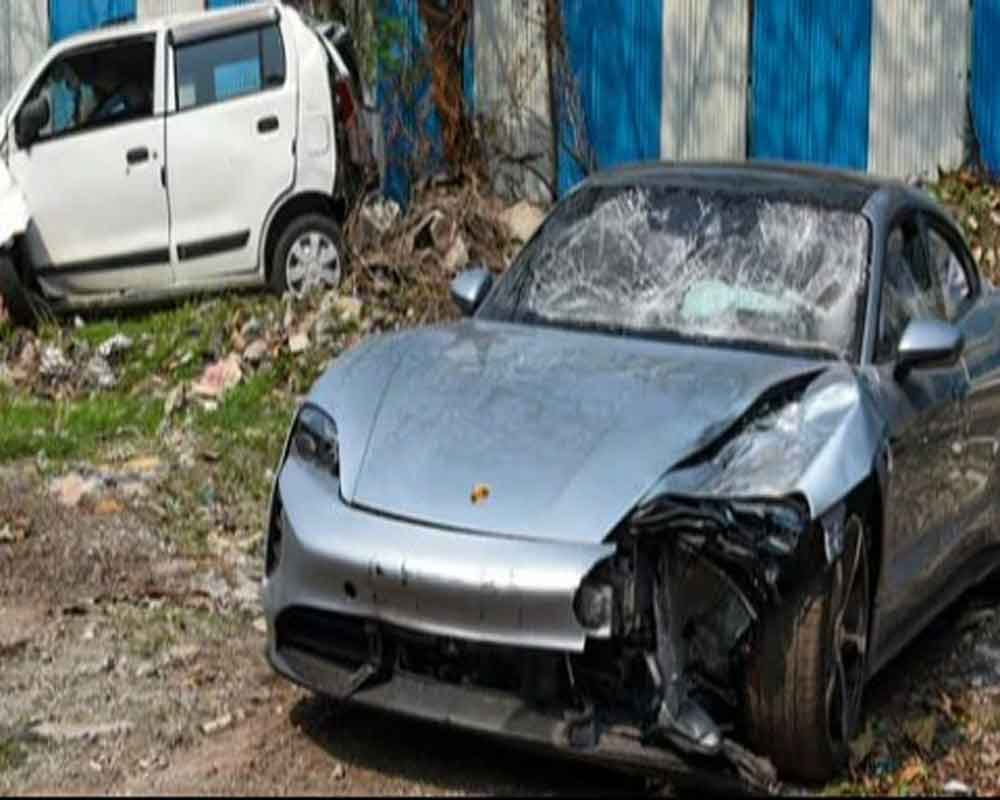
Pune Police investigating the Porsche car crash case on Monday said the blood samples of the juvenile driver were thrown into a dustbin and replaced with another person's samples which showed no traces of alcohol and arrested two doctors and a staffer of Sassoon General Hospital.
The arrested persons are identified as Dr Ajay Taware, head of the state-run hospital's Forensic Medicine department, Dr Shrihari Halnor, the chief medical officer, and the staffer Atul Ghatkamble who works under Dr Taware. They were remanded in police custody till May 30.
"The juvenile's father had called the doctor and offered him allurements to replace the blood samples," Pune Police Commissioner Amitesh Kumar said at a press conference here on Monday.
As the juvenile's blood samples were replaced, the report which was received on Sunday from the hospital showed no traces of alcohol, he said.
Two IT professionals were killed after their motorcycle was hit by a speeding Porsche allegedly driven by the minor boy in the early hours of May 19 in Kalyani Nagar area of Pune city. The police claim the teenager was drunk at the time of the accident.
In separate developments, a court allowed the police to take custody of Vishal Agarwal, the realtor father of the 17-year-old involved in the car crash, from the Yerwada Central Jail in connection with the case of kidnapping and wrongful confinement of his driver.
A team of representatives from Porsche reached the Yerwada police station on Monday to conduct a technical inspection of the luxury car involved in the crash, an official said.
"Dr Ajay Taware and Dr Shrihari Halnor have been arrested. The investigation revealed that the blood samples of the juvenile were replaced with some other person's samples and this was done on the direction of Dr Taware," said Amitesh Kumar.
On the instructions of Dr Taware, the juvenile's blood samples were thrown into a dustbin and replaced with the blood samples of another person, he said.
"The investigation also revealed that it was the juvenile's father who had called Dr Ajay Taware and offered him allurements to replace the blood samples," Kumar said.
Another police official from the crime branch told PTI that the juvenile's father made multiple calls to Dr Taware.
Kumar said the manipulation of the blood sample came to light after another sample of the juvenile taken for DNA sampling was sent to another hospital.
"The report of the other hospital revealed the juvenile's blood report at the Sassoon Hospital was manipulated as the DNA of (blood samples of) both the reports did not match," he said.
He said a probe is underway to find out whose blood samples were collected to replace those of the juvenile and CCTV footage of the Sassoon Hospital was recovered.
"We are probing whose samples were taken to replace the samples of the juvenile. We are probing whether someone's samples were taken or it was taken from the stock at the lab in the state-run hospital. We are investigating this aspect through CCTV footage, interrogation, and technical analysis," said Kumar.
The police commissioner said that Indian Penal sections 201 (causing disappearance of evidence of offence), 120 B (criminal conspiracy) and other relevant sections have been added to the case in which the juvenile has been booked.
"We have made the juvenile's father co-accused in the present case," he said.
A police officer said the court allowed the police to take custody of Vishal Agarwal from the Yerwada Central Jail in connection with the case of kidnapping and wrongful confinement of his driver.
The teenager involved in the crash was initially granted bail by the Juvenile Justice Board, which also asked him to write an essay on road accidents, but following outrage and a review application by the police, he was sent to an observation home till June 5.
The police commissioner added that the report of another sample of the juvenile taken at the Aundh Hospital, 20 hours after the accident, also did not have the traces of alcohol as it was taken for the purpose of DNA sampling.
"We have already clarified that our case is not based on the pillar of blood sample but is based on section 304 (culpable homicide not amounting to murder). The juvenile (in the car crash) was in full senses and knew that drunk driving can endanger the lives of others on the road," he said.
After the first report of the juvenile which was based on "physical appearance" came negative on Sunday morning, there was a scope for suspicion, Kumar said, adding police clandestinely took samples of the juvenile at different hospitals and sent them for DNA test.
Another officer explained how the sample manipulation was detected.
"At 11 am on Sunday, the first blood sample of the minor was collected at Sassoon. As an abundant precaution after the report of physical appearance came negative, it was decided that a second sample needs to be collected. It was collected at Aundh Hospital and sent for the DNA sampling to FSL.
"The report stated that the DNA sample of the father didn't match with the sample collected at Sassoon, which means he was not the biological father of the juvenile (indicating sample manipulation)," he added.
Trending News
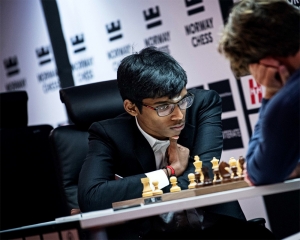
Norway chess: Praggnanandhaa claims maiden classical win over Carlsen, takes sole lead
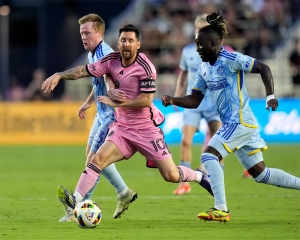
Messi scores, but Inter Miami"s 10-match MLS unbeaten streak ends in 3-1 loss to Atlanta United

Rajkot fire tragedy: Another game zone partner held; one accused died in blaze, say police
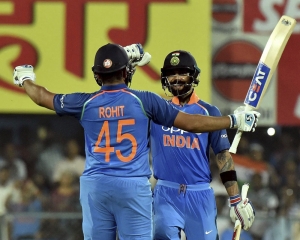
Last Dance: Final chance for Kohli, Rohit to give India an ICC Trophy after 13 years

At least 2,000 feared dead in Papua New Guinea landslide. These are some challenges rescuers face

Want Hardik to come good in T20 WC, he has gone through a lot: Harbhajan

Ronaldo sets Saudi Pro League season scoring record while Al-Hilal finishes unbeaten

EU, Israel in war of words as ties nosedive ahead of Spain, Ireland recognising Palestinian state

12 people injured after Qatar Airways plane hits turbulence on way to Dublin

KKR vs SRH: Guru Gambhir's head versus Captain Cummins' heart in high-stakes final
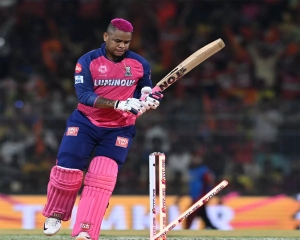
Hetmyer fined for breaching IPL Code of Conduct

Every vote counts, make yours count too: PM Modi
State editions, we will move sc over haryana not releasing capital share of water: atishi, bjp mahila morcha holds protest over water crisis in city, ac blast triggers fire in flat in noida high-rise society, fire related calls surged to 180 on wednesday: dfs, former aide of tharoor held at igia for smuggling gold, delhi student gets chicago booth impact award, sunday edition, genesis of growth | from bud to branch, a symphony of dreams, loss and a nation's awakening, at his majesty's service, tale of valour, love, and redemption, exploring the garden of jade, foodfreak | home chefs push food frontiers, e-mail this link to a friend..

Pune Porsche crash: Maharashtra panel launches probe into Juvenile Justice Board's bail decision
The maharashtra women and child development commissioner has set up a committee to investigate the juvenile justice board's bail decision for a teenager involved in a fatal porsche crash. the inquiry focuses on whether judicial protocols were followed, amid allegations of misleading statements about the crash's circumstances..


IMAGES
VIDEO
COMMENTS
Given below are two essays in English for students and children about the topic of 'Juvenile Delinquency' in both long and short form. The first essay is a long essay on the Juvenile Delinquency of 400-500 words. This long essay about Juvenile Delinquency is suitable for students of class 7, 8, 9 and 10, and also for competitive exam ...
Theories of Juvenile Delinquency. Research showed individuals' attitudes toward crime may herald their criminal behavior, in agreement with criminological theories such as control theory, learning theory and psychological theories like the theory of reasoned action. Juvenile Delinquency: Social Disorganization Theory.
Long Essay on Juvenile Delinquency 500 Words in English. Long Essay on Juvenile Delinquency is usually given to classes 7, 8, 9, and 10. There have been various perspectives on the definition and time of Juvenile deadbeats. Juvenile Delinquency is a customarily utilized term in the advanced age where crime percentages have expanded alarmingly.
If you are tasked with writing an essay on juvenile delinquency, choosing a compelling topic is essential. To help you get started, here are 111 juvenile delinquency essay topic ideas and examples: The impact of family structure on juvenile delinquency. The role of peer pressure in juvenile delinquency.
The legal definition and the case workers definition. (Tappan, 1949) In the legal definition, a juvenile delinquent is one who has decided to act contrary to laid down law and rules (offender). As such, this person deserves to be dealt with accordingly to deter him and others like him from engaging in such behaviors.
One of the various types of essays that can be asked in the IELTS W riting task 2 is a problem solution essay. IELTS problem solution essay requires candidates to talk about a specific problem or its causes and suggest possible solutions to the same. The problem-solution essay topics like Juvenile Delinquency are based on real-life situations and issues and are essential to be familiar with ...
There are several types of juvenile punishments. For example, you might have heard about house arrest, delinquency programs, and youth prisons. Depending on the severity of the committed crime, the judges can be more or less lenient with the offenders. In case you are looking to write a juvenile justice essay, we can help.
Juvenile delinquency is a habit of committing criminal offenses by an adolescent or young person who has not attained 18 years of age and can be held liable for his/her criminal acts. ... empirical, quantitative, qualitative, and cross-sectional studies published in English were included, which used ML and statistical models to analyze ...
Juvenile Delinquency and Punishment. Words: 385 Pages: 1. In modern society, the punishment for criminals varies according to their age. Juvenile offenders can be subject to different types of punishment than those applied to adults. The general consensus is that young people have a greater chance of rehabilitation than adult criminals, thus ...
Causes and Effects of Juvenile Delinquency: Essay Abstract. Given the widespread family, societal, community, and individual costs that come with high rates of juvenile delinquency, one cannot help to wonder what the government is doing about it. It is also everybody's concern that the government may not be doing enough to make a difference.
31 essay samples found. Juvenile delinquency, representing a range of antisocial behaviors committed by minors, poses significant challenges to families, communities, and legal systems. Essays could explore the sociological, psychological, and economic factors contributing to juvenile delinquency, dissecting the complex interplay of family ...
The Causes Of Juvenile Delinquency. This essay sample was donated by a student to help the academic community. Papers provided by EduBirdie writers usually outdo students' samples. Juvenile Delinquency has evolved overtime, leading to new found crimes and punishments within the system.
referred to as juvenile offenders. The aim of this study is to comprehensively elucidate the research and work carried out on juvenile offenders, with a specific focus on the critical role played by social factors in all facets of juvenile delinquency. Additionally, this research seeks to investigate the social roots and influences that contribute to the criminal behavior of young offenders ...
An interview with a former juvenile delinquent is provided to permit the application of some of the theoretical ideas about delinquency to an actual case. The legal response to juvenile crime is traced from the early days of the juvenile court until the present. The involvement of the police, probation officers, the juvenile court, and ...
The Problem of Juvenile Delinquency Essay. Juvenile delinquency, its severity, and consequences significantly influence the future development of society. In the current conditions of law enforcement, entering the criminal justice system at a young age determines the individual's future. Due to the existing cycle of recidivism that occurred ...
Abstract. This review considers juvenile delinquency and justice from an international perspective. Youth crime is a growing concern. Many young offenders are also victims with complex needs, leading to a public health approach that requires a balance of welfare and justice models. However, around the world there are variable and inadequate ...
Juvenile Delinquency Essay Questions. Choice theory. Click the card to flip 👆. A school of criminology that holds that wrongdoers act as if they weigh the possible benefits of criminal or delinquent activity against the expected costs of being apprehended. They made the choice.
You can also find more Essay Writing articles on events, persons, sports, technology and many more. Long and Short Essays on Juvenile Delinquency for Students and Kids in English. We are providing students with essay samples on a long essay of 500 words and a short essay of 150 words on the topic of Juvenile Delinquency for reference.
Juvenile Delinquency . Juvenile delinquency, is also known as, juvenile offending'. It involves participation in illegal behaviour by minors. Most legal systems such as juvenile detention centers and courts suggest specific procedures for dealing with juveniles. Juvenile delinquency refers to disruptive, or illegal behaviour by children or ...
Juvenile delinquency is a societal problem since it threatens many families and communities in general. Due to the recent trends, there is a need to develop intervention for both the youth and their families. We will write a custom essay on your topic. There are so many causes of delinquency behaviors. It is only after assessing them, that ...
ENGLISH- ARGUMENTATIVE ESSAY- JUVENILE DELINQUENCE - Free download as Word Doc (.doc / .docx), PDF File (.pdf), Text File (.txt) or read online for free.
A third or more of those boys living in the slum areas of large cities may appear in a juvenile court at least once. Girls are becoming increasingly involved in juvenile delinquency. Today, about one of every five youngsters appearing in juvenile court is a girl. In the early 1900's, this ratio was about 1 girl to every 50 or 60 boys.
Juvenile Delinquency: The Misadventures of Tomorrow's Troublemakers Juvenile delinquency, the term encompassing a range of behaviors by young people that are considered antisocial or criminal, presents a complex challenge to societies worldwide. Its ramifications extend far beyond the individual, affecting families, communities, and the society at large.
Juvenile Delinquency: a Case Analysis. It is important to note that juvenile delinquency is a major part of criminology, where the law is violated by underage individuals. Since the agents are not considered adults, the issue becomes a complex and intricate one, where the standard justice systems might not apply or apply in a differential ...
Juvenile Justice Essay 3 facilities are not there for longer than the maximum amount of time they would have served if they had been committed to a juvenile facility. These juveniles may be freed on bond for a considerable amount of time while they await their trial in criminal court. "The assumption that more punitive, adult criminal sanctions will act as a deterrent of juvenile crimes is the ...
They offer to take into consideration aggression, substance abuse, and academic functioning. Many professionals, including Tolan et al. (2013) pay attention to the problem of juvenile delinquency and its prevention, pointing out that it is significant to determine the chronic offender as soon as possible. For example, Kempf-Leonard, Tracy, and ...
The teenager was initially granted bail by the Juvenile Justice Board, which also asked him to write an essay on road accidents, but following outrage over the lenient treatment and a review ...
Pune Crime Branch officials are set to use artificial intelligence (AI) tools to perform a 'digital reconstruction' of a fatal car crash involving a Porsche that killed two IT professionals on May 19. A senior police official stated that AI-based software will be employed to create a detailed digital recreation of the incident, including vehicle movements, speed, and other crucial factors
The teenager involved in the crash was initially granted bail by the Juvenile Justice Board, which also asked him to write an essay on road accidents, but following outrage and a review ...
The Maharashtra Women and Child Development Commissioner has set up a committee to investigate the Juvenile Justice Board's bail decision for a teenager involved in a fatal Porsche crash. The inquiry focuses on whether judicial protocols were followed, amid allegations of misleading statements about the crash's circumstances.